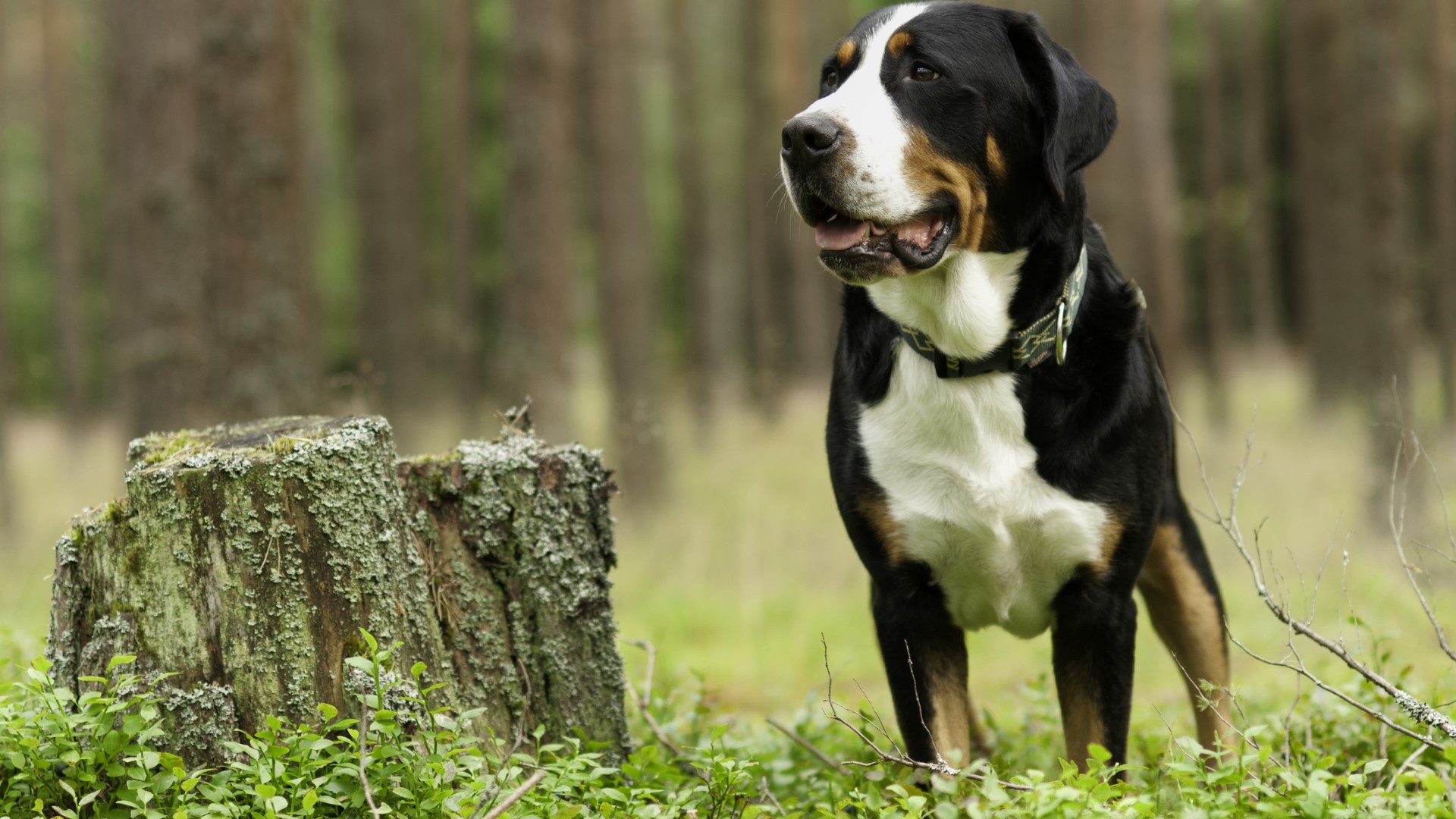
There are so many things to know about Greater Swiss Mountain dogs that are bound to make you fall in love with them. With their affectionate nature and well-rounded sociability, these pups can make wonderful companions. If you're considering adopting one of these gentle giants, it's best to become informed about the breed's history, enrichment and exercise needs, sociability, and more.
From tips on stocking up on the best puppy food to making sure you lifestyle is a good match for this outdoor-loving breed, we've got you covered with everything you need to know about Greater Swiss Mountain dogs and how to give your new canine buddy an enriching, fulfilling, and healthy life.
Read on to learn more!
32 things to know about Greater Swiss Mountain dogs
1. They hail from Switzerland
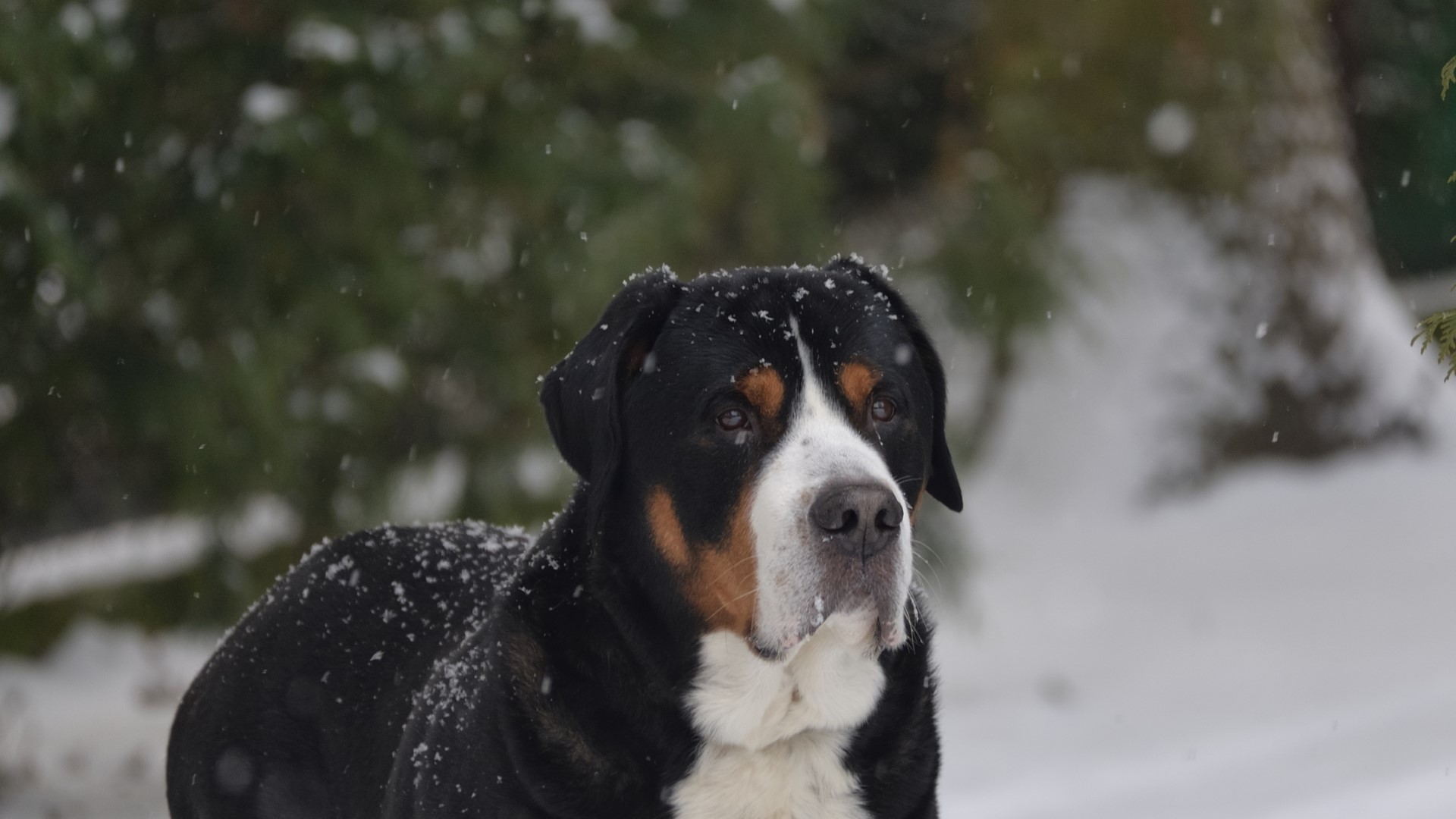
As their name suggests, the Greater Swiss Mountain dog, or Swissies, originated in Switzerland. According to the American Kennel Club (AKC), and is a descendant of warring mastiff-type breeds brought to the Alpine region over 2,000 years ago by the invasion of Julius Ceasar's Roman legions. Despite their ancient history, the breed was only officially recognized by the AKC in 1995. They are the oldest and largest of the four recognized Swiss mountain dog breeds.
2. They were bred as a versatile working dog
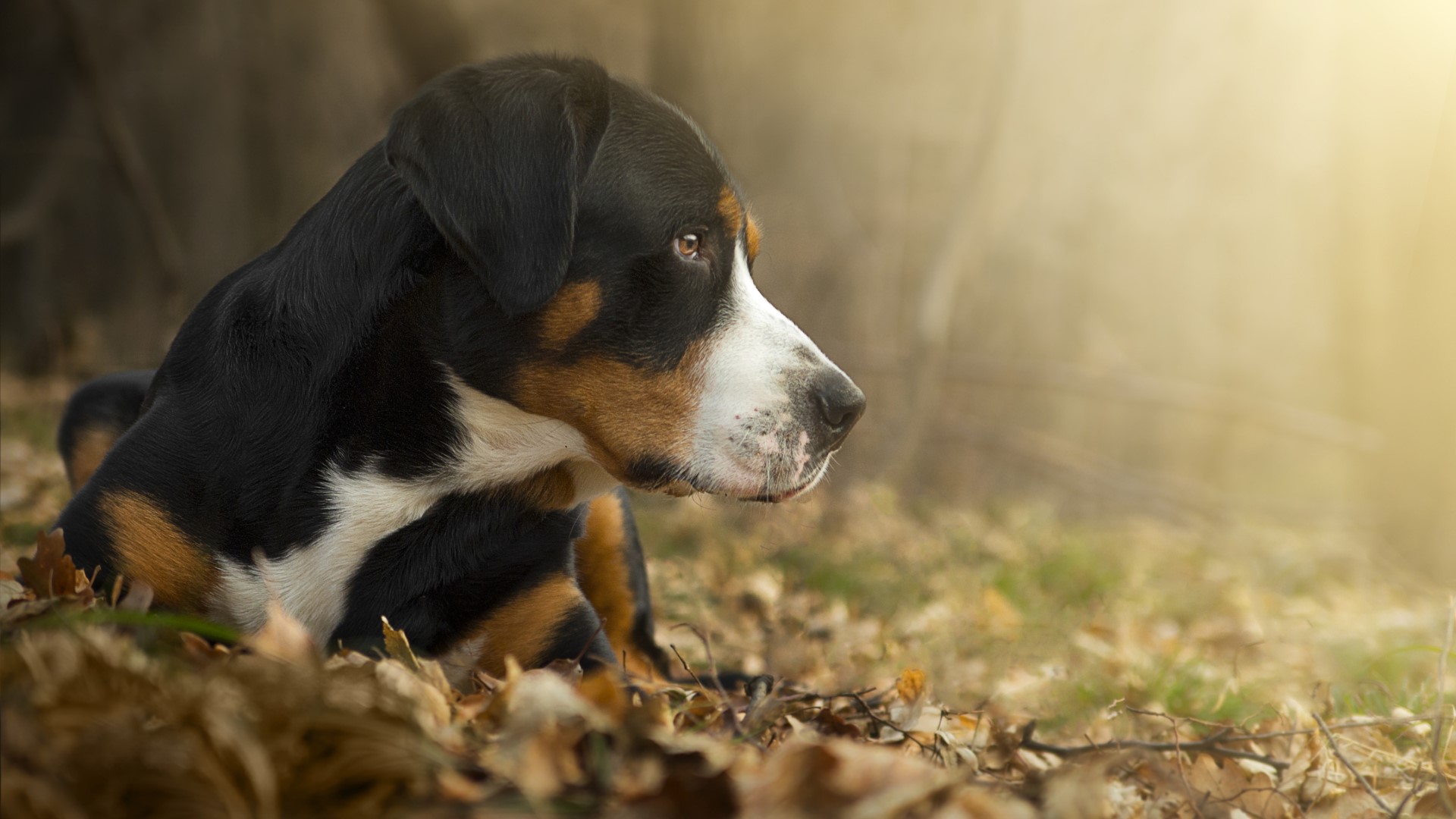
The Greater Swiss Mountain dog was bred as a versatile working dog capable of herding, guarding, and pulling carts. They were most utilized on farms where they protected and rounded up herds of livestock, pulled wagons, and guarded the property. They were often used to move herds of dairy cattle in particular. This powerful but gentle breed also served as a loving family companion. They truly shined in their position as an all-purpose farm dog.
3. They are a large-breed dog
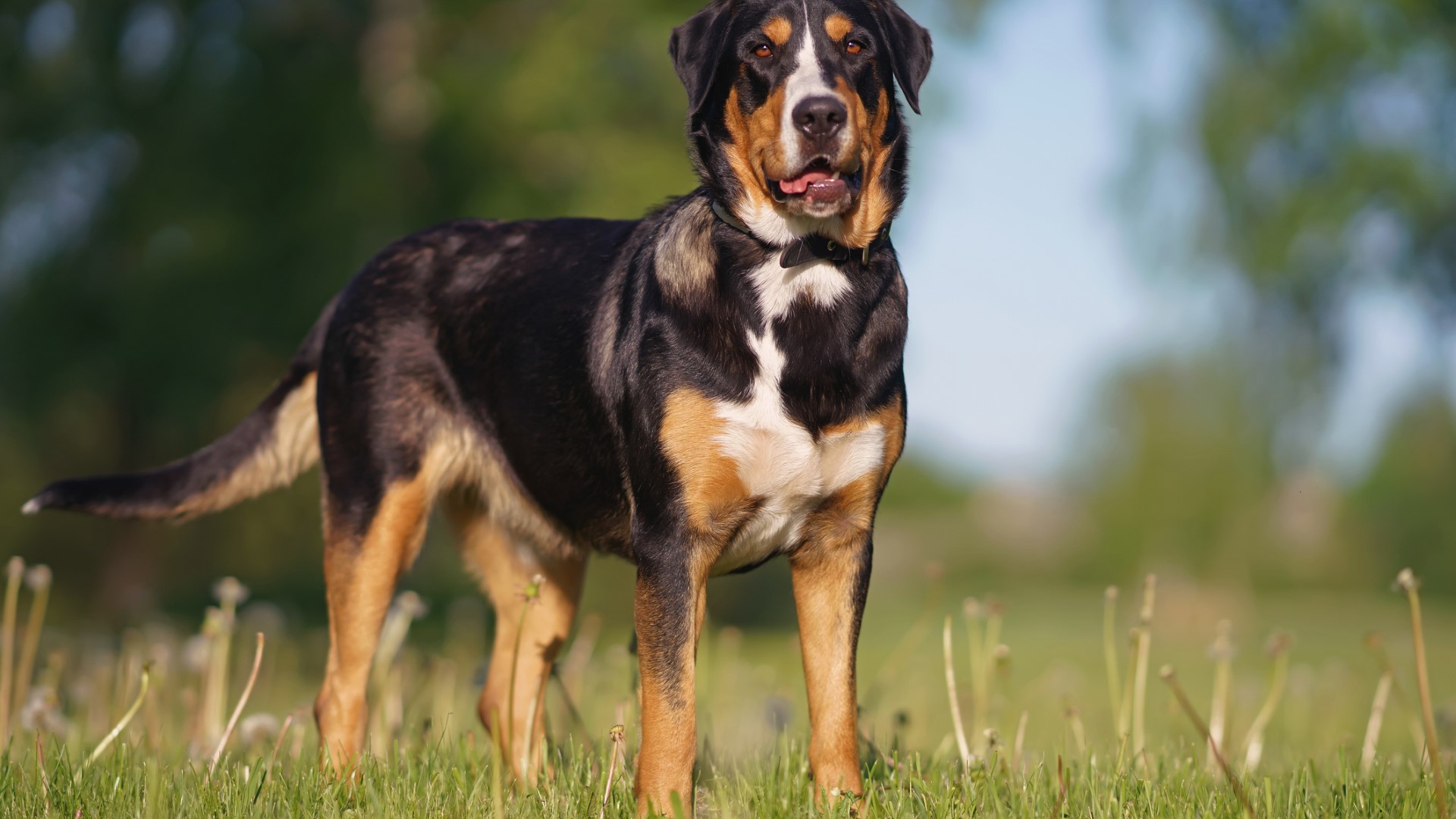
A large-breed dog, the Greater Swiss Mountain dog (aka GSMD) can reach up to 140 pounds and stand roughly 29 inches at the shoulder. Females usually measure 23.5 to 27 inches at the shoulder and reach 85 to 110 pounds. The larger male Greater Swiss Mountain dogs typically weigh in at 115-140 pounds and can stand 25.5 to 28.5 inches at the shoulder. According to their AKC breed standard, these dogs should appear slightly longer than tall with a heavy-boned and well-muscled build.
4. Their average lifespan is 8 to 11 years
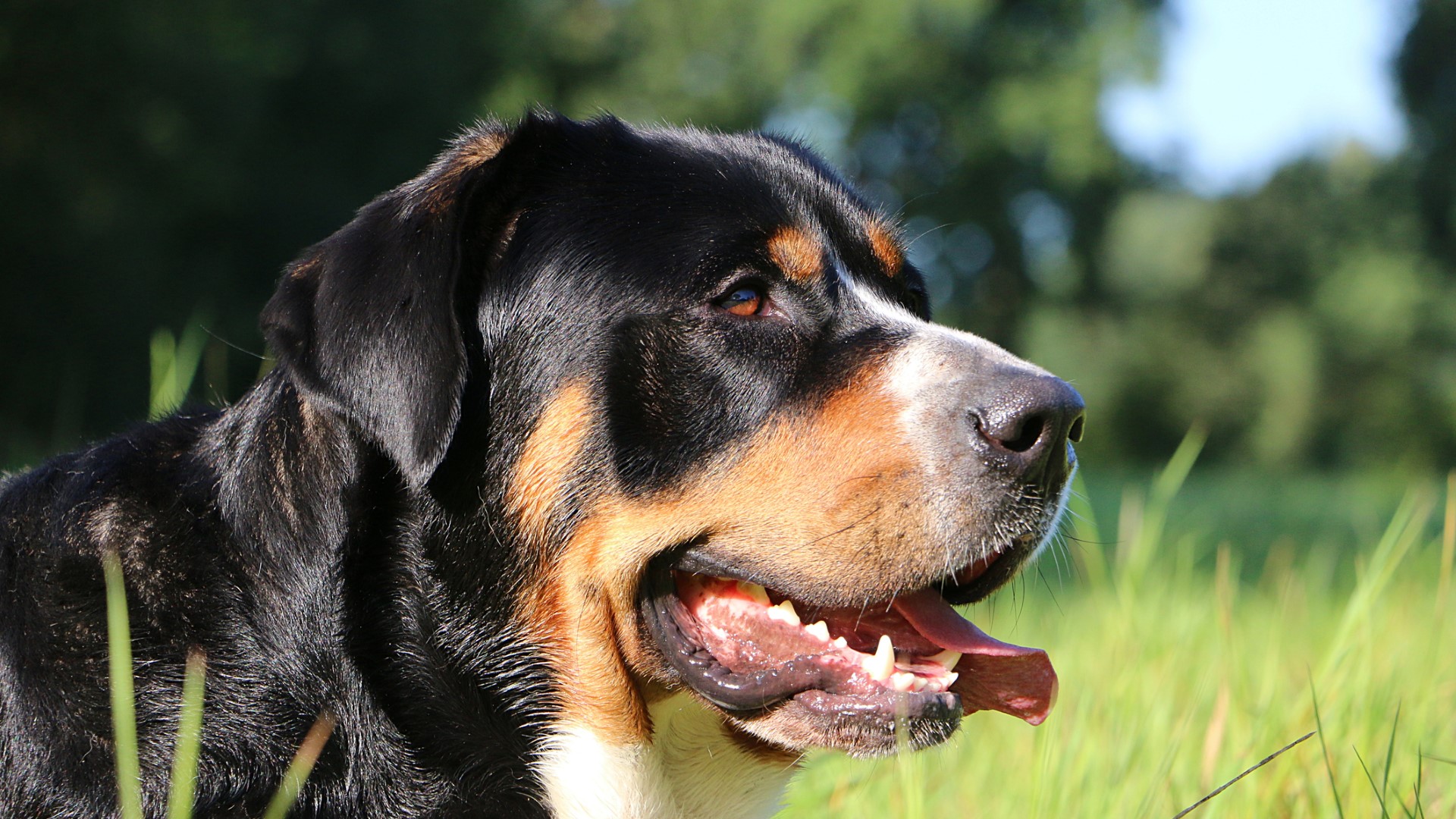
The average lifespan of a Greater Swiss Mountain dog is eight to 11 years. This lifespan is a bit shorter compared to the Appenzeller Swiss Hound (10 to 12 years) and Entlebucher Mountain dog (11 to 13 years). However, their lifespan is longer than the Bernese Mountain dog whose average lifespan is only six to eight years, despite being smaller than the Swissies. Providing regular vet care, exercise, enrichment, the best dog toys, and companionship will help your pooch live a full and healthy life.
5. They have a tri-colored coat
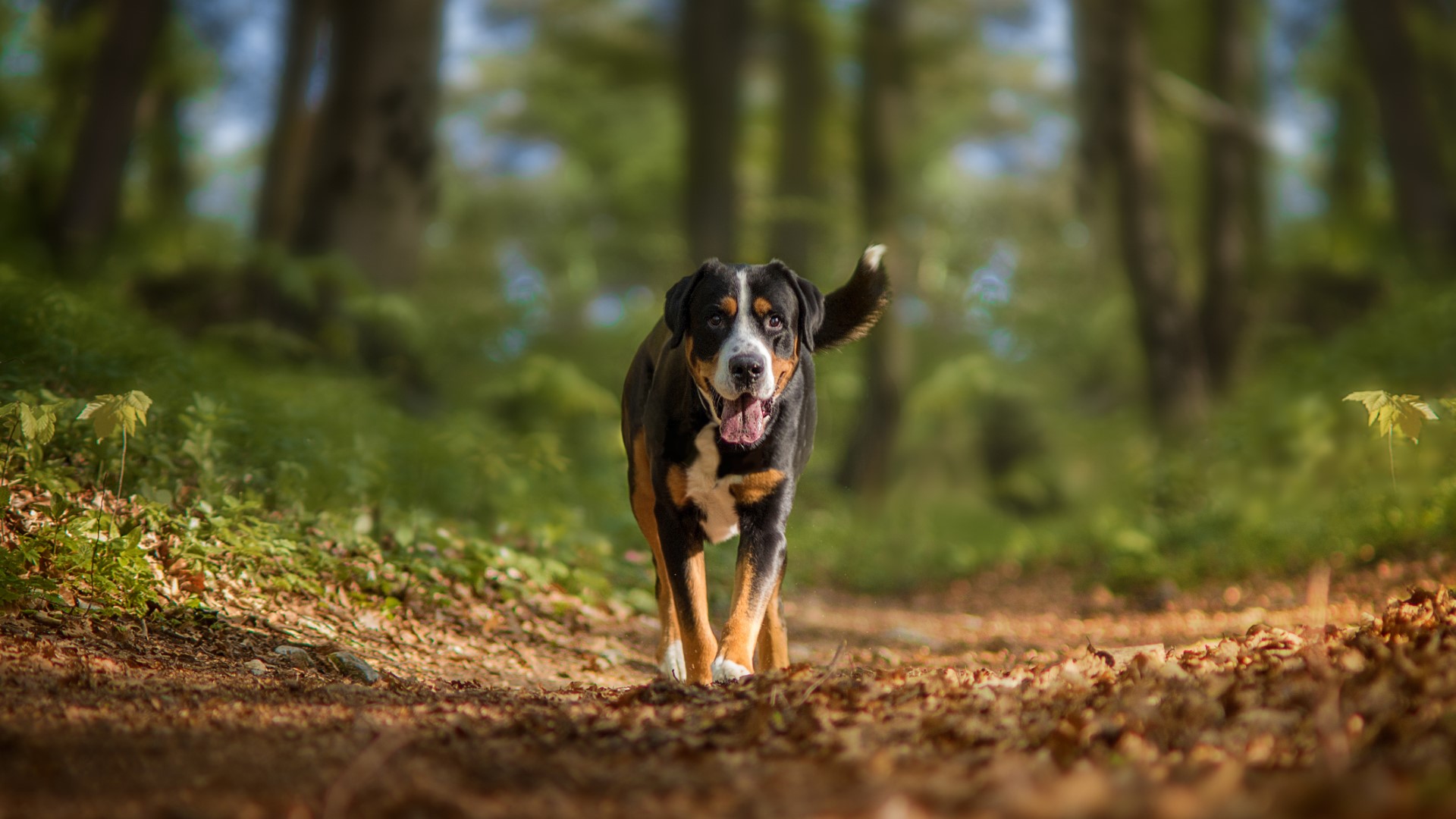
According to the AKC breed standard, the coat color of the Greater Swiss Mountain dog should be black, red, and white. The topcoat should be black with markings of rust-red and white. On the face, they should have rust markings over the eyes, on the cheeks, and on the underside of their ears. This lovely breed also typically features rust markings on either side of their chest, on their legs, and underneath the tail. They should also have a white blaze on the head and around the muzzle, and on the neck, chest, paws, and tip of the tail.
6. Greater Swiss Mountain dogs have a thick, double coat
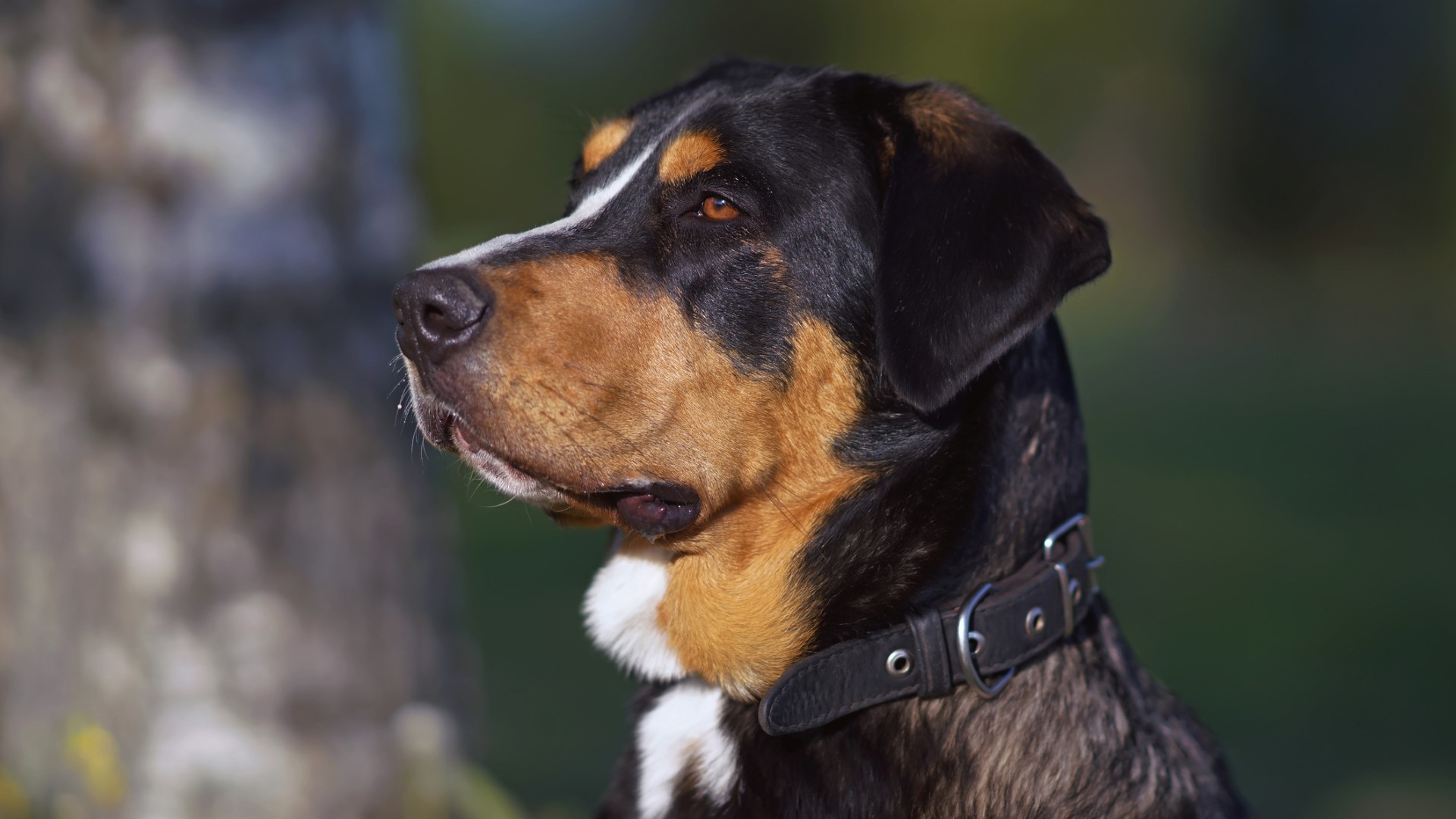
Hailing from the Swiss Alps, it’s no surprise that this rugged and cold-hardy breed features a beautiful, dense double coat. The outer protective layer of the coat is straight, coarse, dense, and usually measures about one to two inches long. The undercoat is thick and provides a robust insulating layer. The undercoat is typically a dark gray, light gray, or tawny color. The thick undercoat often shows around the neck.
7. They are not hypoallergenic
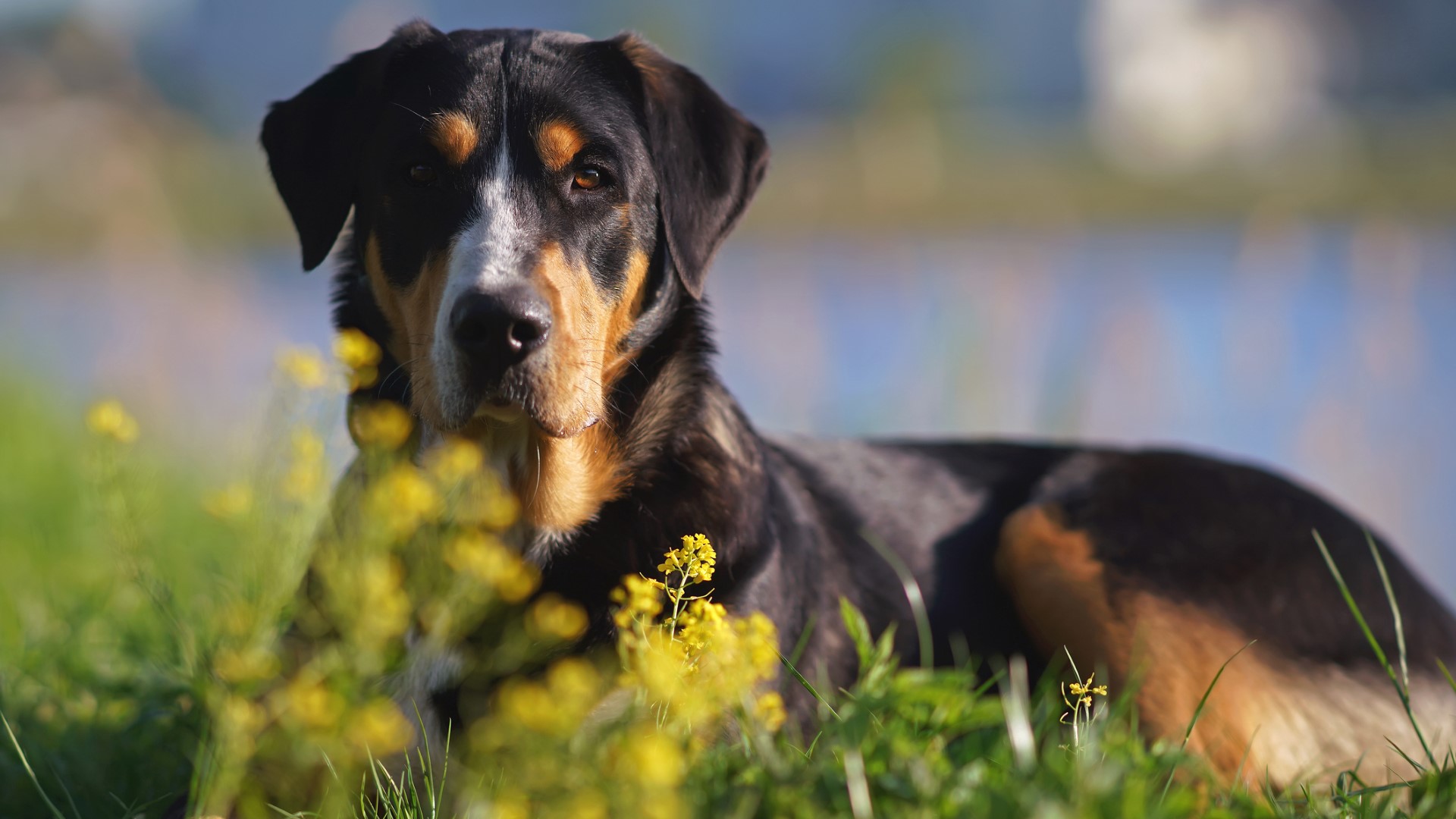
While no dog breed is truly hypoallergenic, the Greater Swiss Mountain dog sheds moderately to heavily depending on the season. They shed the most in spring and fall and are not a low-dander-producing breed. If you are sensitive to dog allergens, this breed is likely not the best option for your household. However, regular grooming and vacuuming can help reduce allergens around the house if you do have a moderate or high-shedding pup in your home.
8. They are prone to some genetic conditions
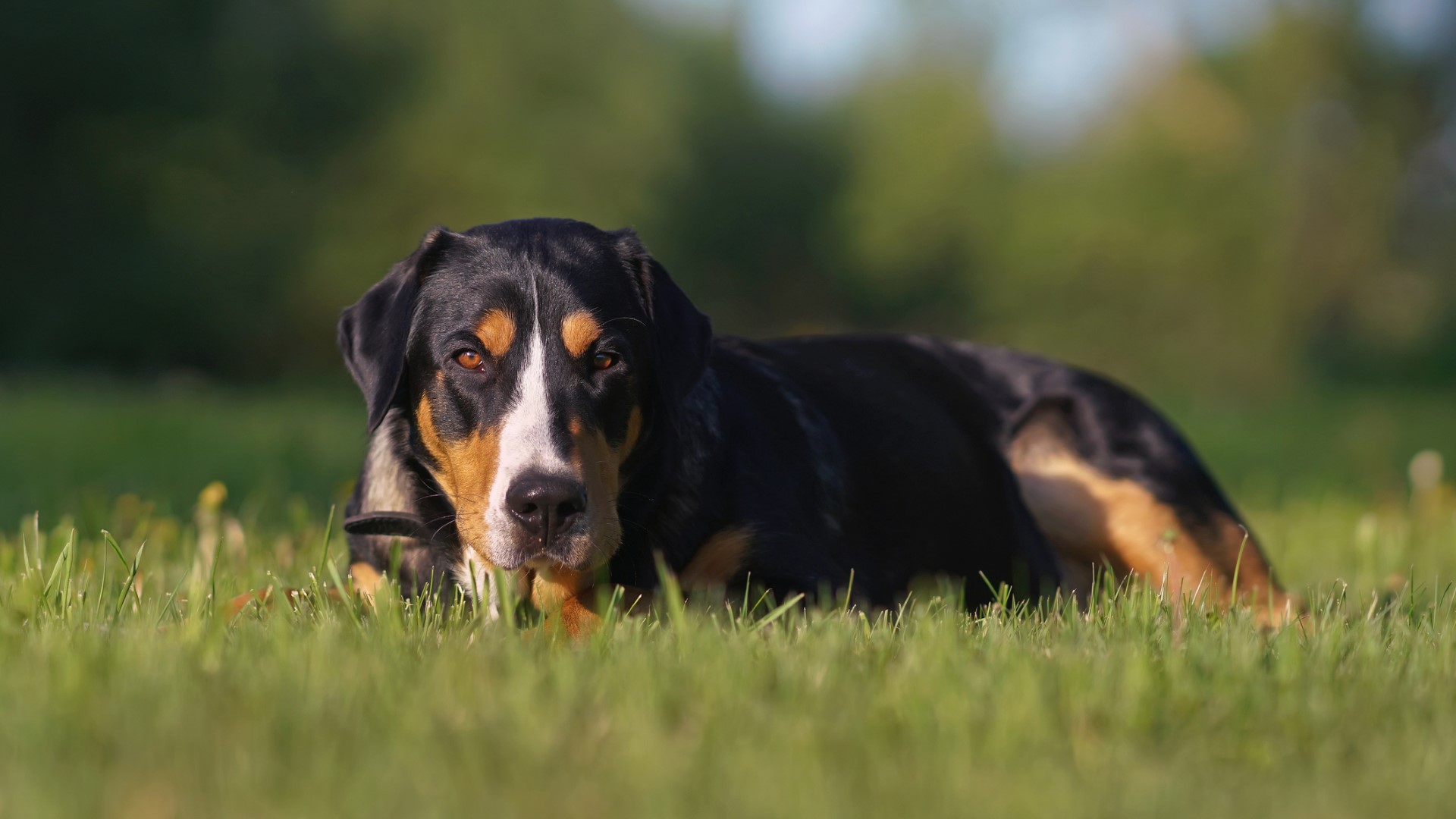
While they are a moderately healthy breed, Swissies are still prone to developing some genetic conditions. The most common health conditions that occur in this breed include hip dysplasia, elbow dysplasia, bloat (gastric dilatation-volvulus), twisting of the spleen (splenic torsion), a joint disorder affecting the cartilage (osteochondritis dissecans), epilepsy, degenerative myelopathy, hypothyroidism, and various forms of cancer. Routine checkups, screenings, preventative care, and early treatment, and investing in the best pet insurance can help your Swissie live their best life.
9. Swissies don't reach full social maturity until 4 or 5 years old

Greater Swiss Mountain dogs are slow to mature. While they typically reach their full height at around 18 months old, Swissies can continue developing muscle mass until they’re about three years old and they don’t reach full social maturity until four or five years old. Dog parents of this breed should be prepared for an extended puppyhood and adolescent period. Providing consistent enrichment, exercise, and restorative sleep is crucial to helping your Swissie become a well-rounded adult.
10. They need a large-breed formulated diet
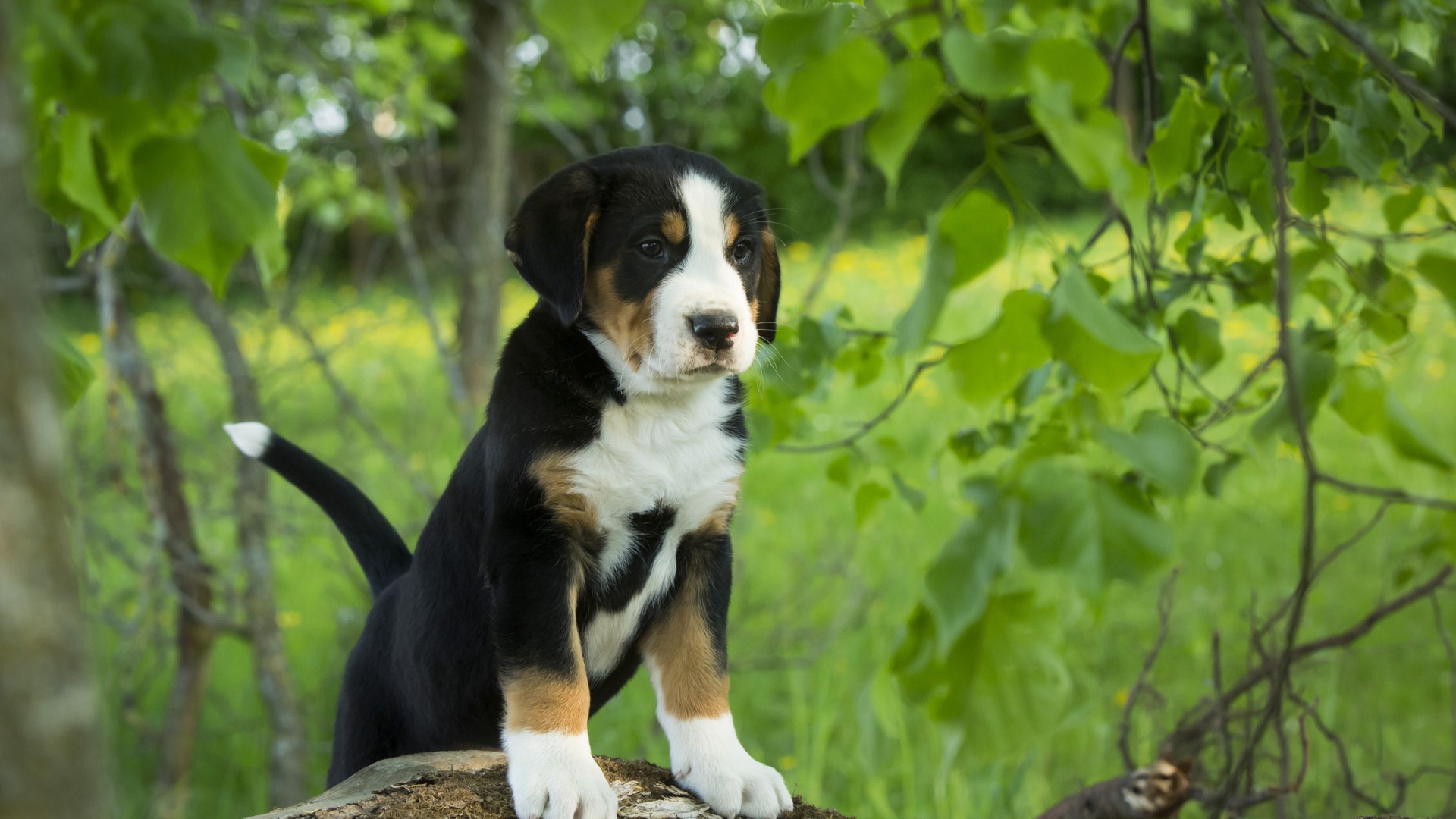
As they’re growing, make sure to feed some of the best puppy food with a high-quality but lower-calorie diet that prevents this large breed from growing too quickly. Rapid growth can be hard on their joints and bones which can cause developmental, mobility, and comfort issues. There are a lot of things to know about caring for a large breed dog, but one thing we recommend is buying dog food formulated specifically for large breeds. They should gain about 10 pounds a month until they reach eight to 10 months old. After this, growth should begin to slow down.
11. They are an excellent family dog
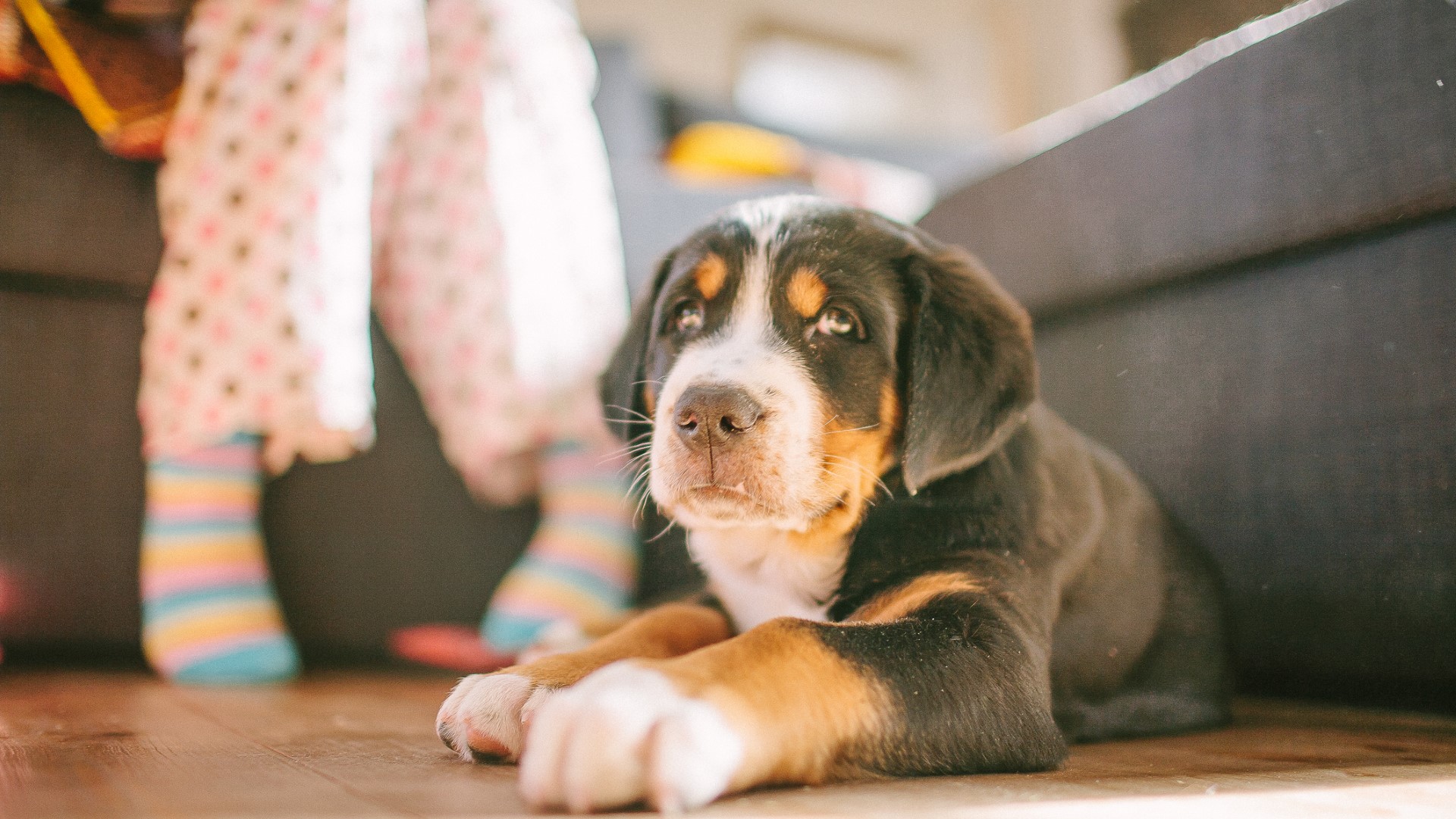
The Greater Swiss Mountain dog can make an excellent family companion. They are characterized as loving, patient, and devoted dogs especially when well-socialized from an early age. Because of their size and extended puppy phase, this breed may not be suitable for those with very young children, as this large doggo may accidentally knock over small kids. Supervision is key to ensuring safety between dogs and kids, and it’s crucial to teach children how to gently interact with dogs and to give them space as needed.
12. Swissies love the outdoors
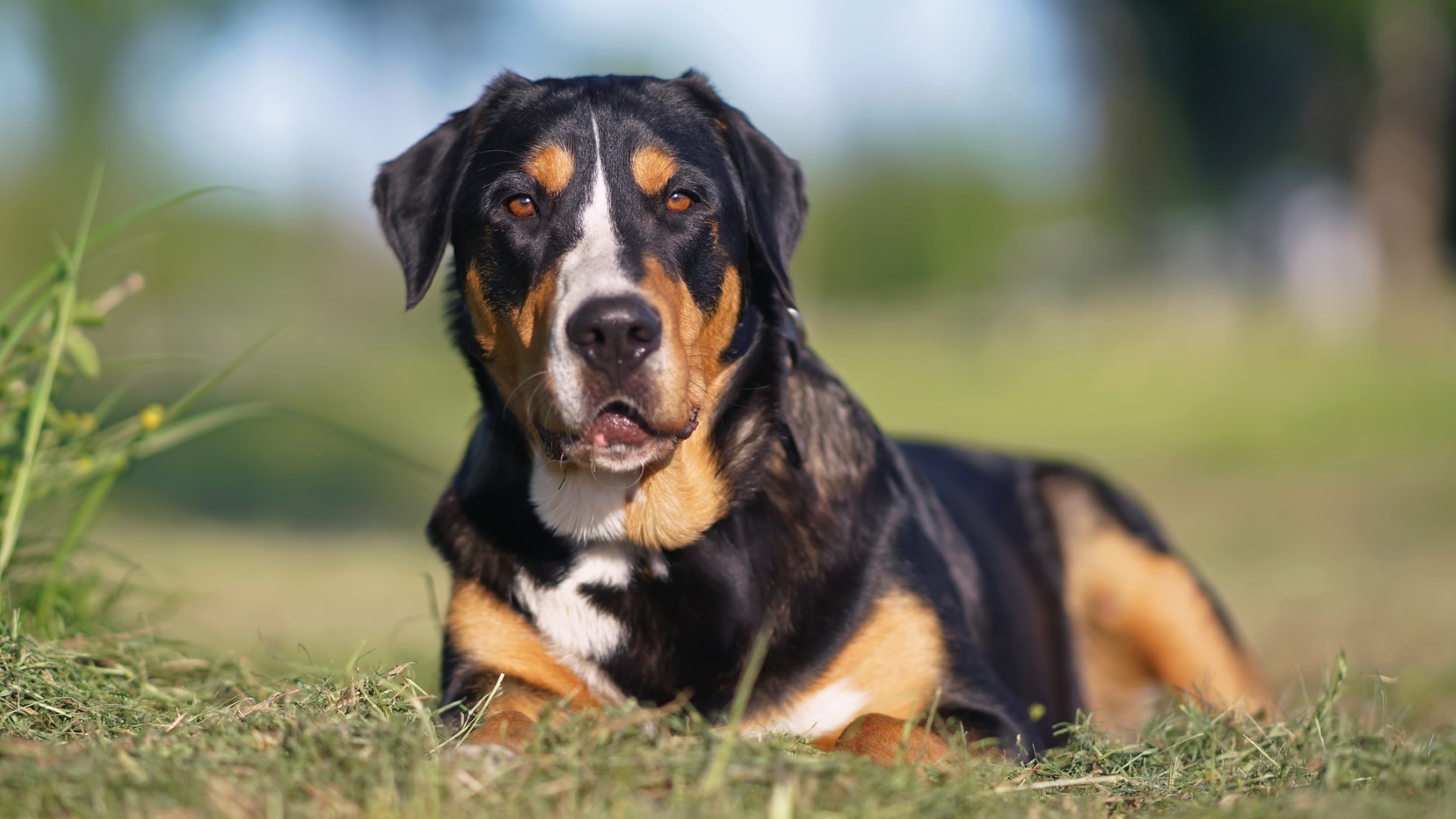
Bred as one of the best dog breeds for living on a farm, Swissies tend to love being outside and participating in outdoor activities with their family. They are a moderately active and sturdy breed that especially excels in navigating various terrains and hiking in cool or cold weather. They aren’t well-suited for being a running partner and you’ll need to be careful about preventing overheating in the warm months. But, hiking, trips to the park, camping, and games of tug of war are all excellent activities for GSMDs.
13. They may want to chase or herd other animals
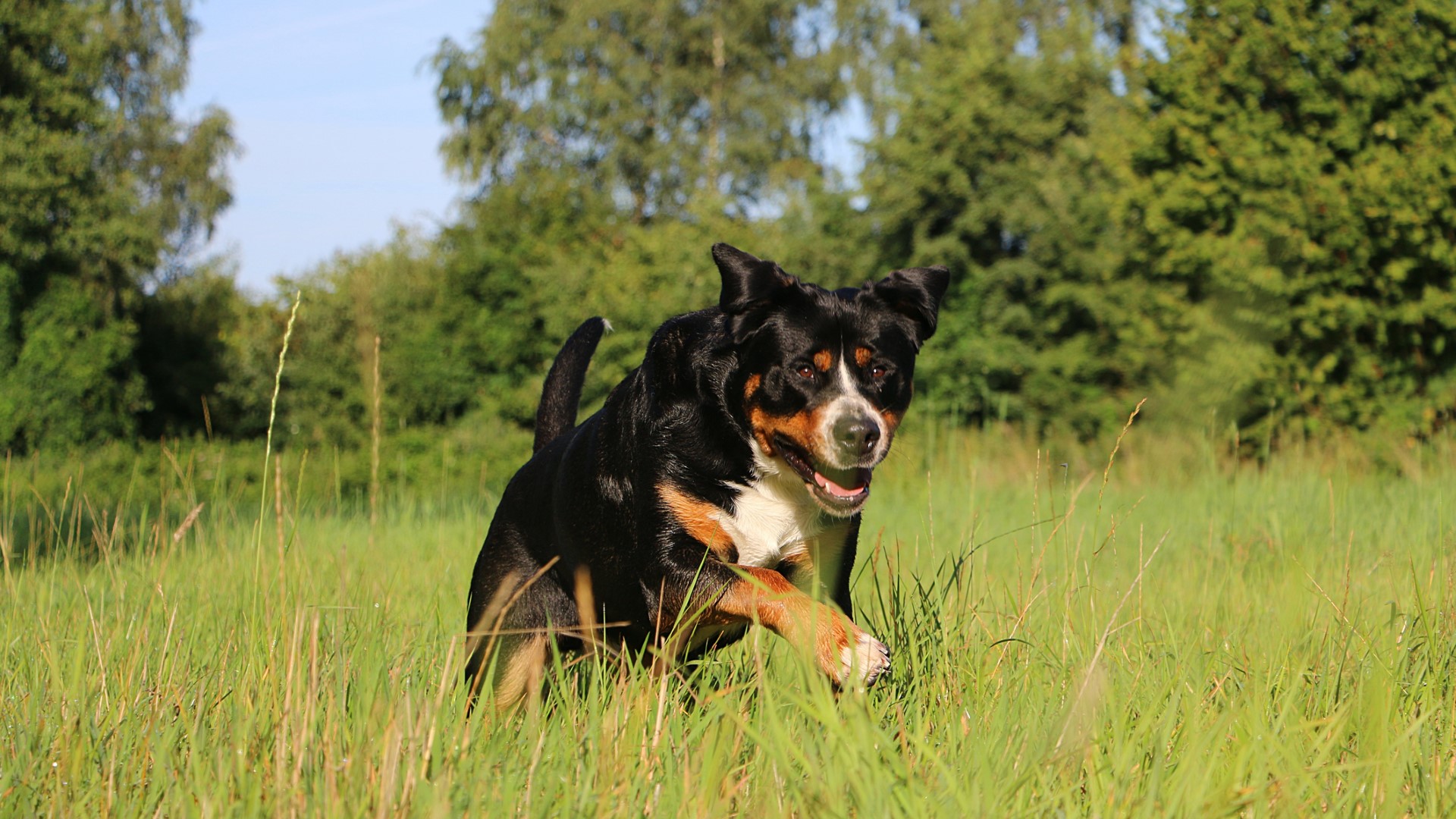
As a herding breed, your Greater Swiss Mountain dog may show a heightened interest in chasing other animals. During play, Swissies often herd each other so they may try to herd other household pets such as cats. Because of their size, it’s especially important to socialize these big pups with other animals from an early age. Make sure to teach, encourage, and reward calm behavior with other animals from puppyhood and provide a safe alternative for herding or chasing behavior. Flirt poles and fetch can be positive outlets.
14. They are an alert and protective breed
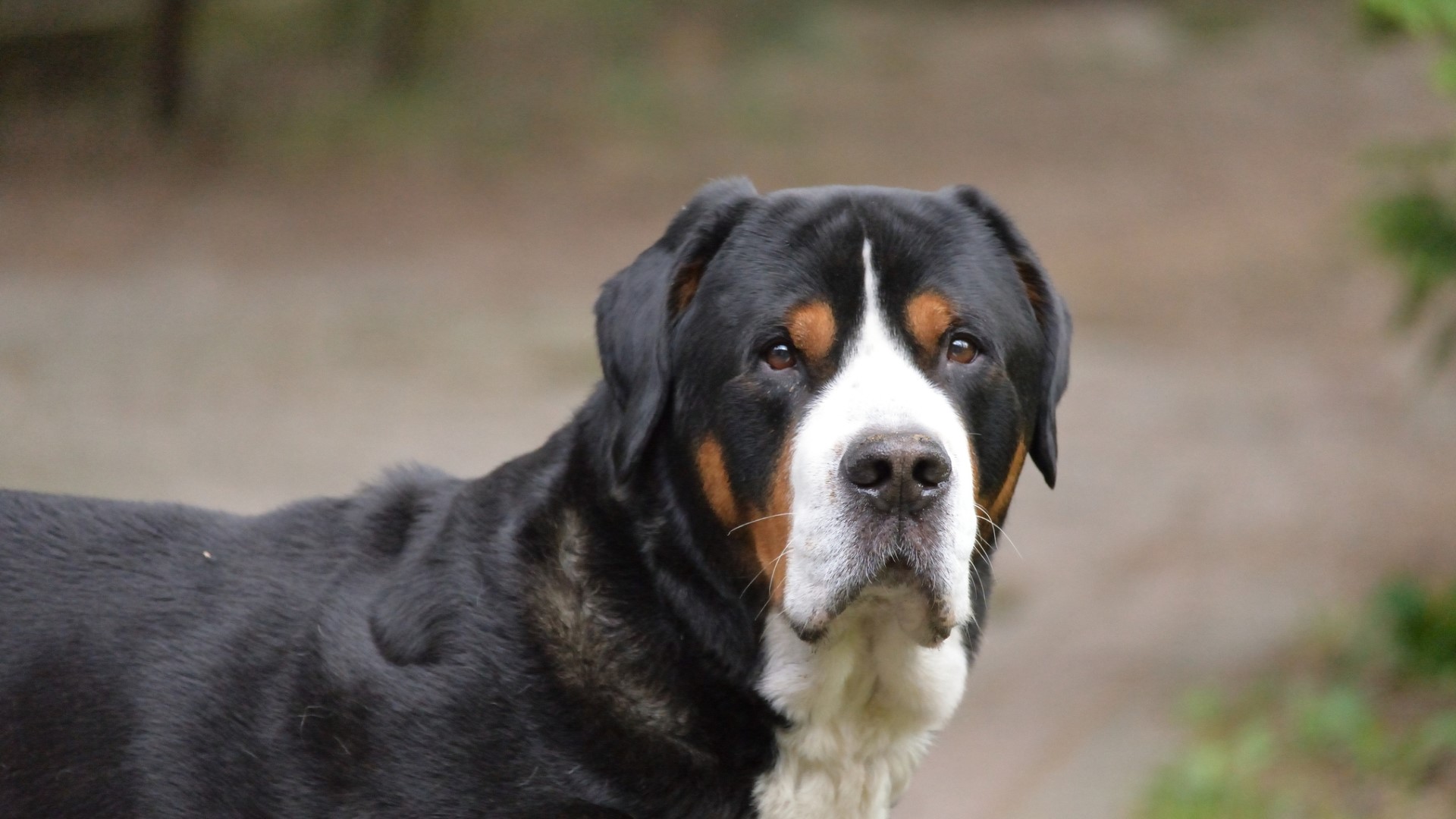
Bred as a watchdog on Swiss farms, your GSMD may have an alert and protective personality. They may bark to alert their pet parents of strangers approaching the house or new and sudden noises. Some Swissies may have a bit of a wary disposition if they aren’t well socialized from an early age. Helping your pup feel comfortable and safe around a variety of animals, people, and environments is essential in raising a balanced and calm dog.
15. They are a cold-hardy breed
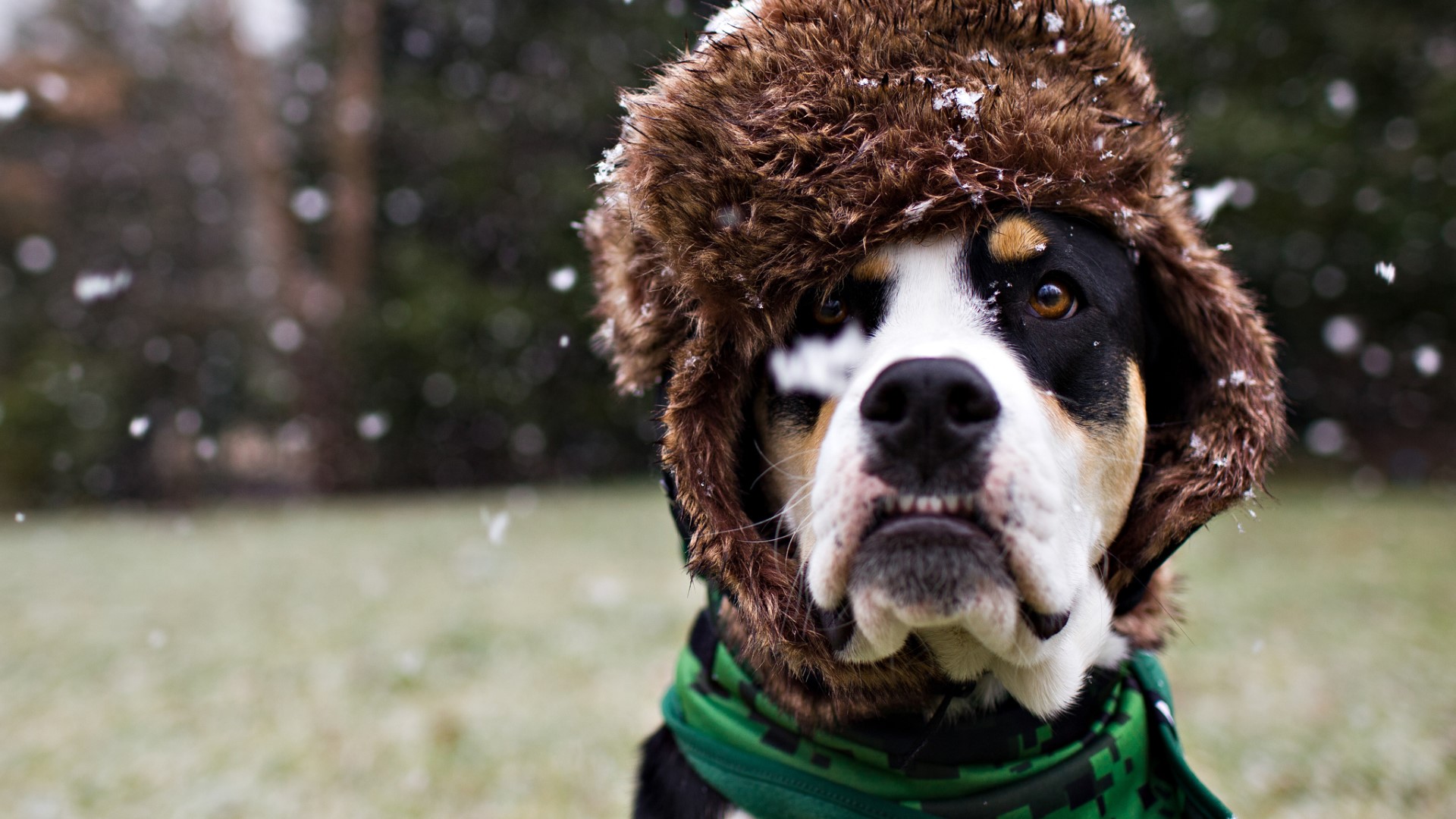
One of the best dog breeds for cold climates, many Greater Swiss Mountain dogs enjoy snow-based activities. Their dense, thick double coat provides excellent protection against the cold and also prevents snow from soaking them. While they are bred to thrive in wintery environments, you still want to avoid prolonged cold exposure and make sure they have access to a warm, dry, and comfortable shelter when spending extended time outside in the winter months.
16. It's important to teach them to walk on a leash without pulling
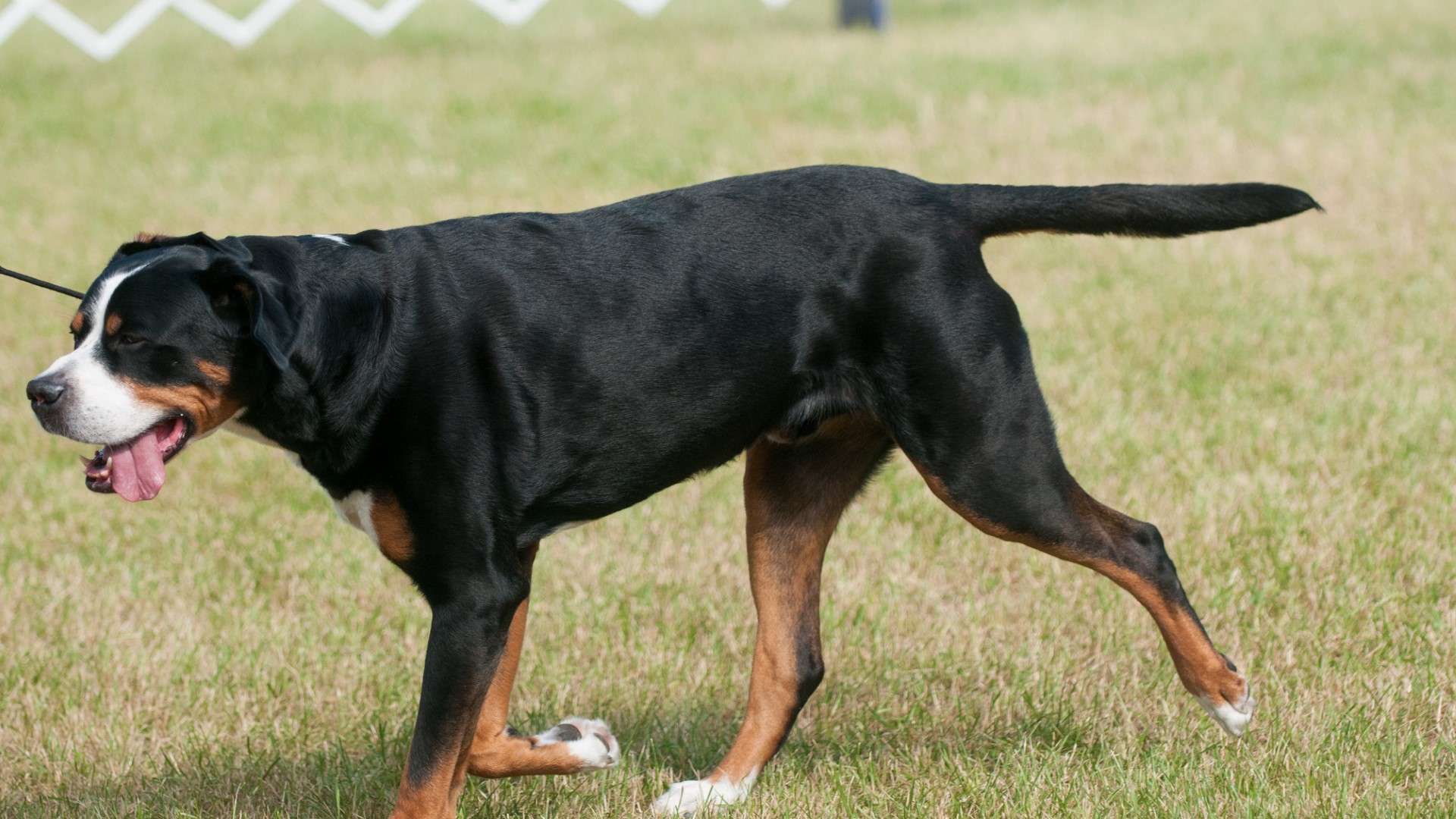
As an especially strong breed, it’s important to teach GSMDs how to walk on a leash without pulling. You can teach loose leash walking by rewarding your pup for staying next to you on a walk or for not pulling. Using a long leash can be a great way to allow your dog more freedom of movement on a walk while encouraging them to keep a loose line. Teaching them to walk next to you is a great skill for navigating tight or crowded spaces.
17. They benefit from learning to regulate
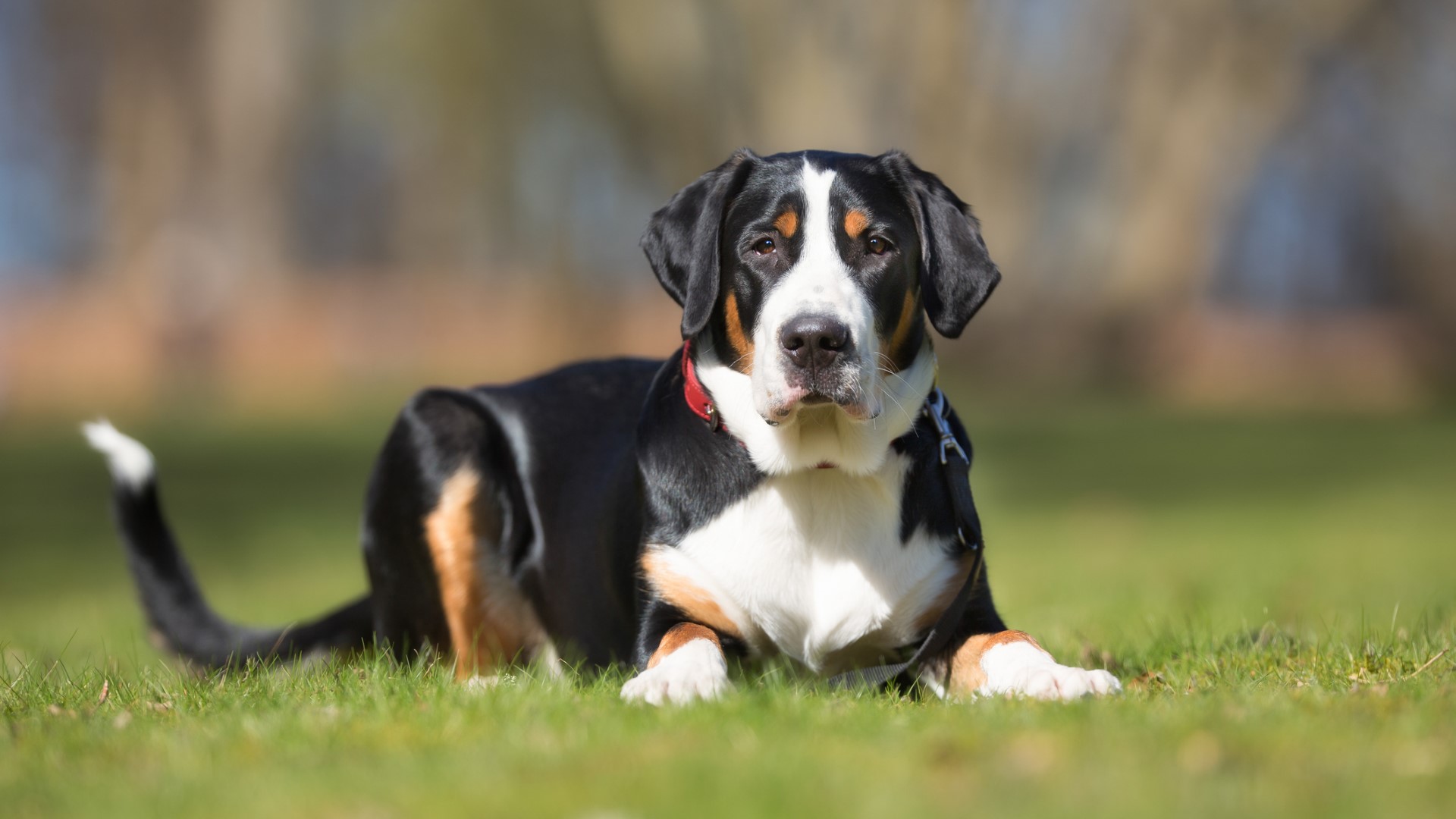
Teaching and rewarding gentle interactions with other critters and people is essential when raising a Greater Swiss Mountain dog. Because of their size and herding tendencies, it’s important to teach them how to remain calm and gentle with other beings.
You can use several exercises to help your Swissie learn how to regulate their play from boisterous and energetic to gentle and compatible with kids or small dogs. One way to achieve this is by incrementally ramping up the energy of play with your GSMD and then asking them to settle down, rewarding them with some of the best dog treats each time. You can slowly increase how energetic the play is before asking them to settle as your pup increases their ability to regulate.
18. Early socialization is crucial
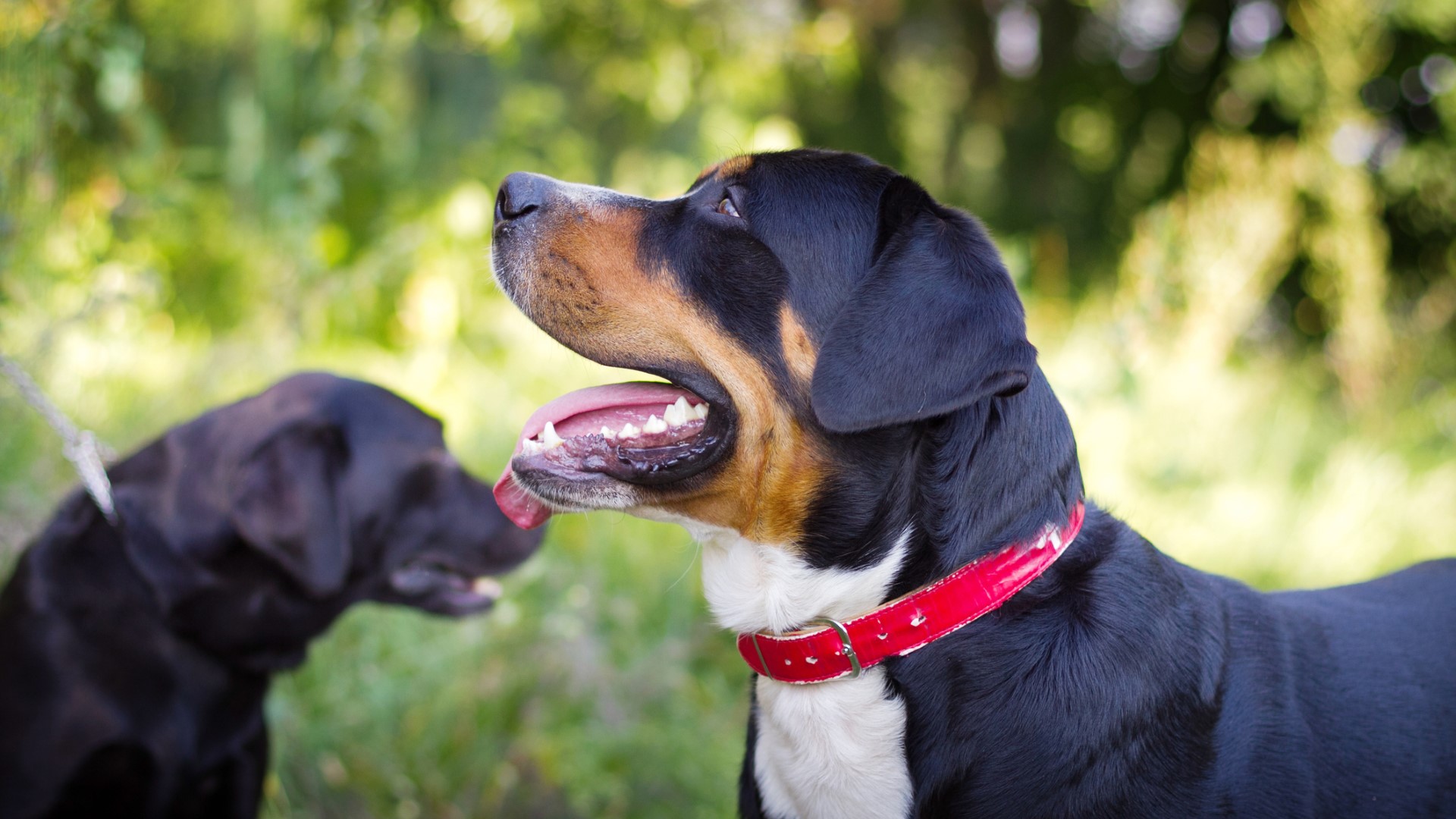
All pups, regardless of breed, benefit from early socialization. Gently and supportively introducing them to new environments, people, and animals starting from eight weeks of age is essential to helping your Swissie safely and comfortably navigate the world around them.
According to the American Veterinary Society of Animal Behavior, during the first 12 weeks of life, puppies’ brains are primed to be especially curious and social. Socialization during this time is critical, and it's much easier to help their brain form positive associations with new experiences at this age than when they’re older puppies and adults.
Some of our favorite tips for socializing a puppy include preparing them for interactions with other dogs and people, exposing them to lots of new experiences, and gradually introducing different objects and noises.
19. They should learn four on the floor
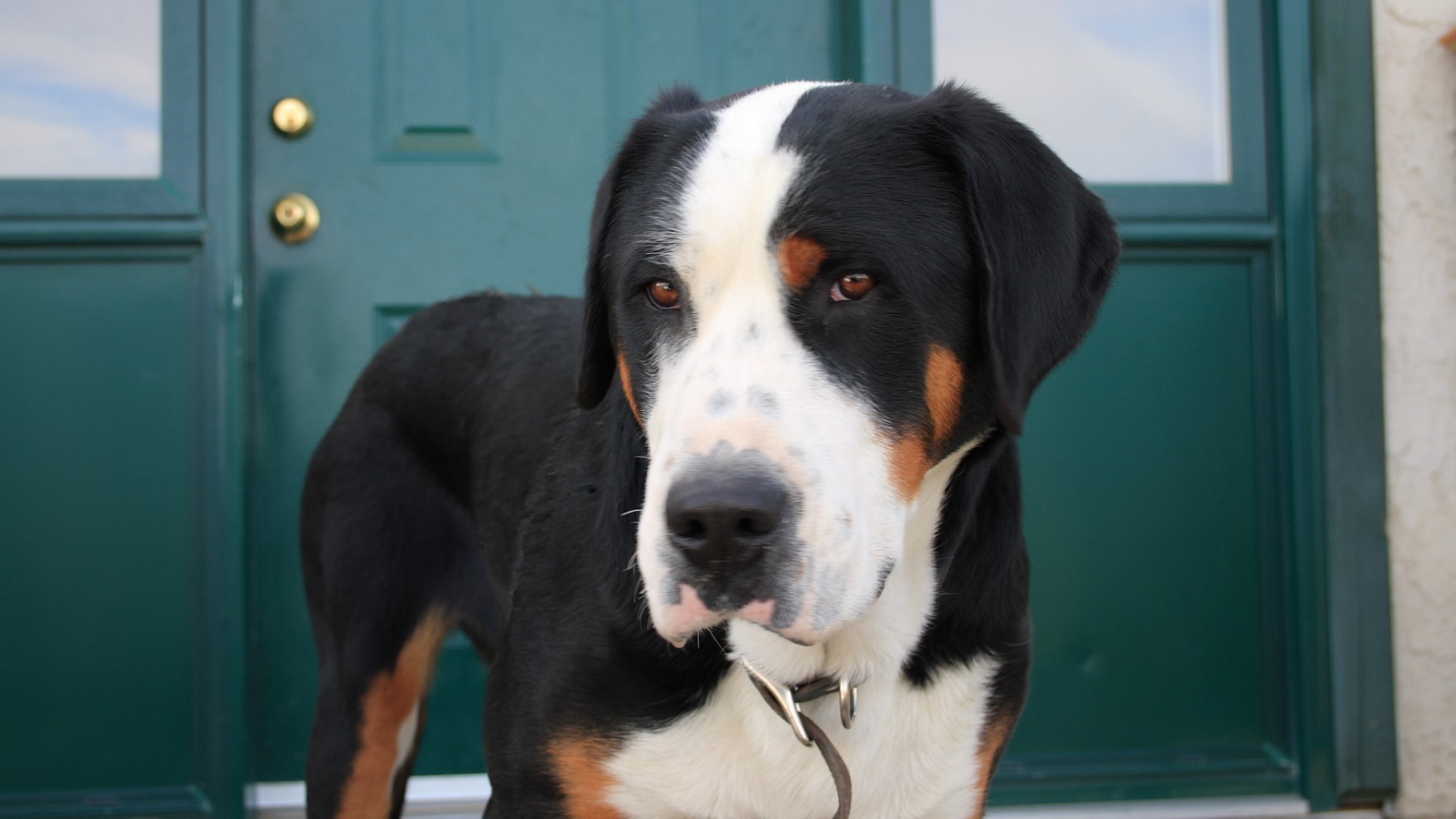
Large-breed dogs can easily topple someone over by accident during an excited greeting. It’s important to teach your Swissie how to gently greet others by teaching “four on the floor”. This phrase means your pup will ideally keep all four paws on the floor during a greeting, rather than jumping up on someone.
One way to teach this skill is by placing treats on the floor as your dog comes to greet you. This directs their attention toward the ground and rewards them for keeping all paws on the floor. Over time, you can say four on the floor as you place treats down. It’s helpful to be ready with treats to do this as soon as you walk through the door.
If your pup loves carrying toys around, you can also have a basket of toys by the door and teach them to grab one as soon as you come home. It’s much harder to jump with a toy in their mouth, and instead, they can parade and wiggle around with their toy while you greet them.
20. They can excel at carrying packs
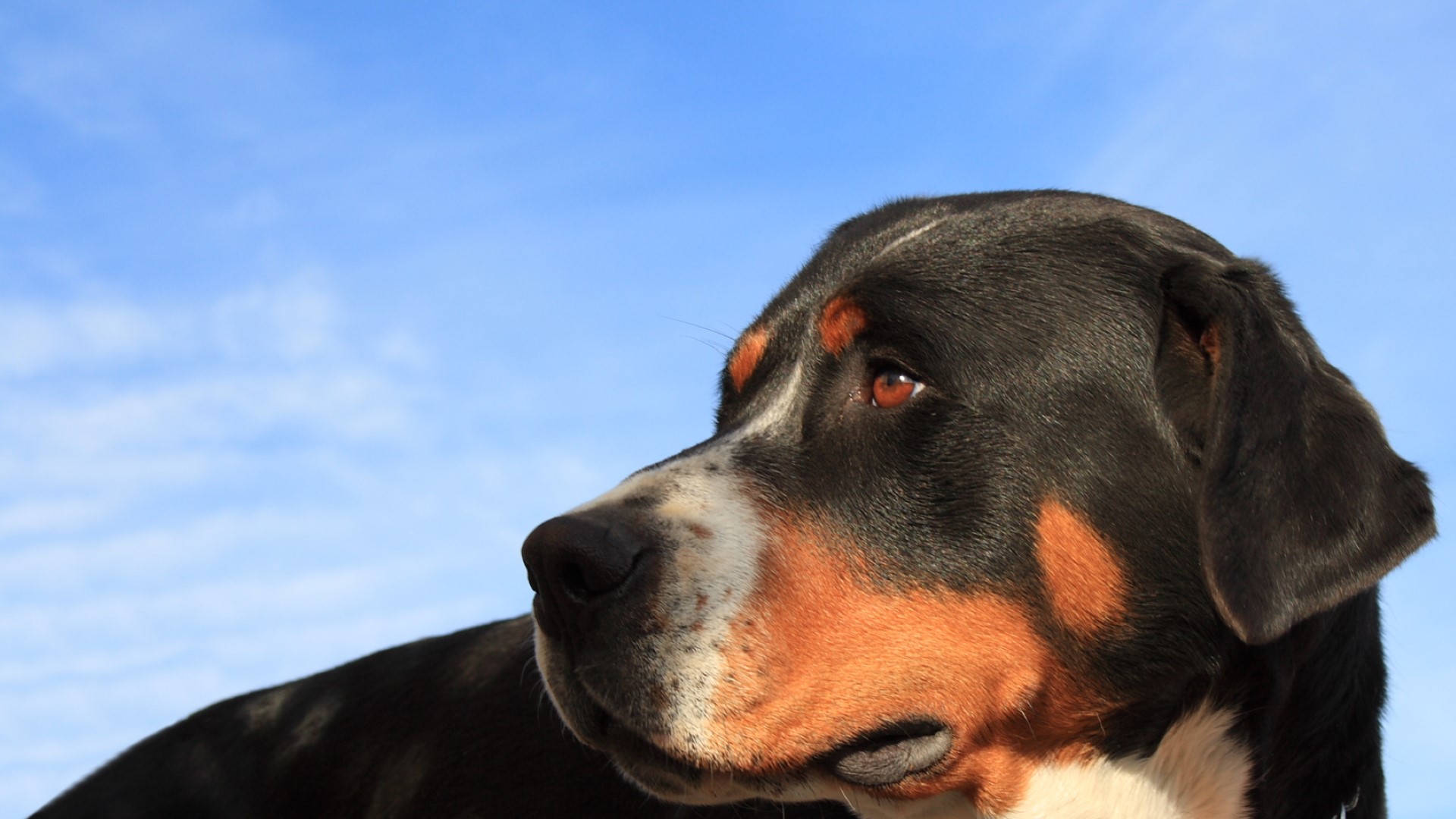
Many GSMDs can comfortably carry packs on hikes and on walks. If you’d like to teach your pup to carry a pack, it’s important to properly introduce them to wear one, make sure they are able to carry the weight, and that they are fit enough to carry the weight over the planned distance. Start by associating the pack with receiving tasty treats and make sure your pup feels safe as you introduce carrying it.
Begin with a pack and contents that weigh only about five percent of your dog’s body weight. As they become conditioned to wearing it and increase their fitness, you can slowly increase the load to a maximum of about 15 to 20 percent of their body weight. If after slow introductions, your pup is still not comfortable with wearing a pack it’s best to respect their feelings and find another activity or skill to teach them.
21. They respond well to positive reinforcement
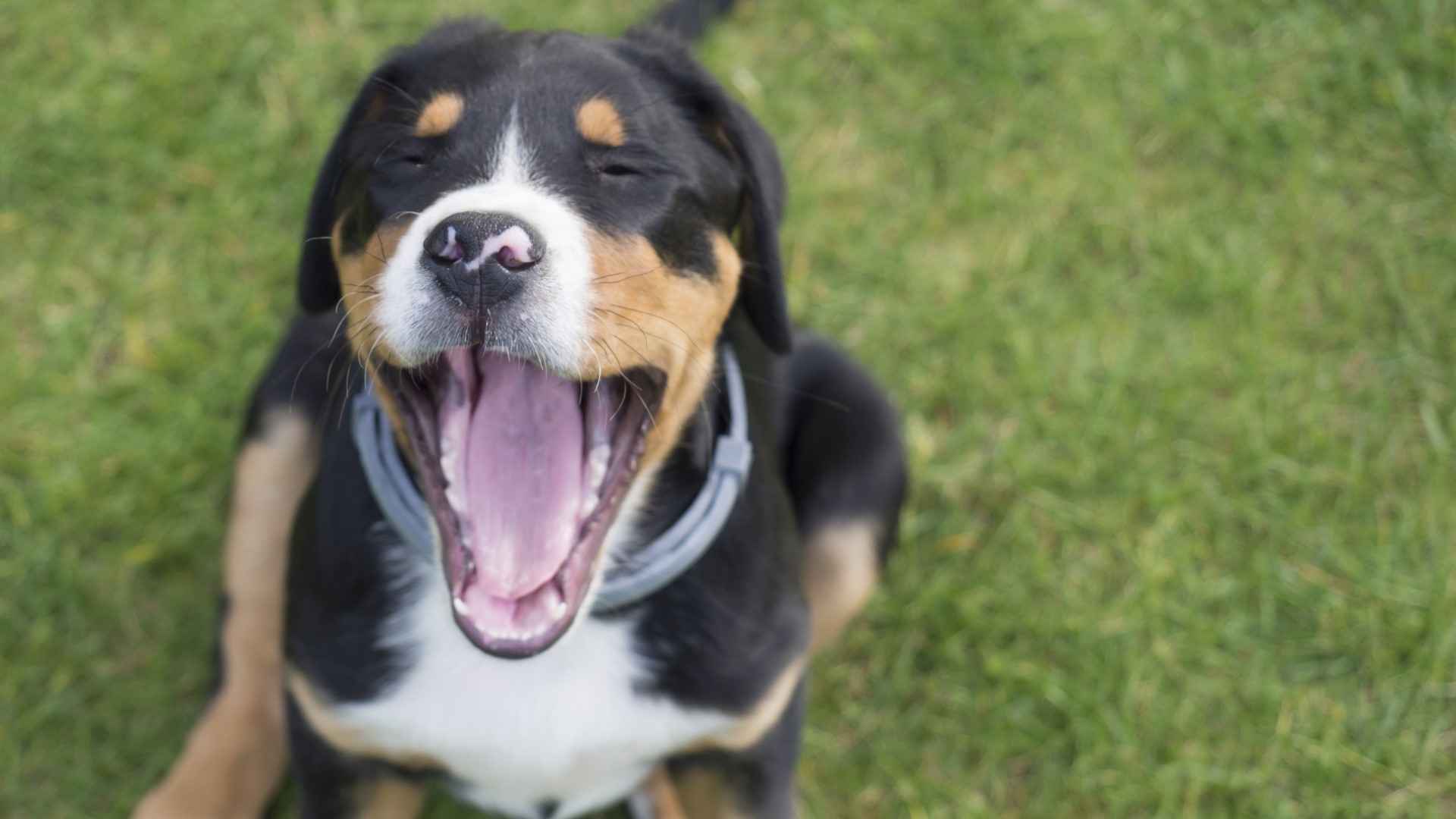
Like any breed, positive reinforcement and relationship-based training are excellent methods of teaching your dogs skills, tasks, and cues. They bond strongly with their people and typically enjoy the engagement of fun training sessions. Using positive reinforcements like treats and toys during training can ensure that your pup has a positive relationship toward learning.
It’s important to keep training sessions short, fun, and to move at your dog’s pace. If a skill involves a more complicated movement or set of behaviors, remember to break the cue down into easily learnable segments before putting it all together. Finally, it’s essential not to use rewards coercively or to withhold treats, toys, and snuggles for use only during training as this can cause anxiety and frustration around learning.
22. They have an adaptable nature
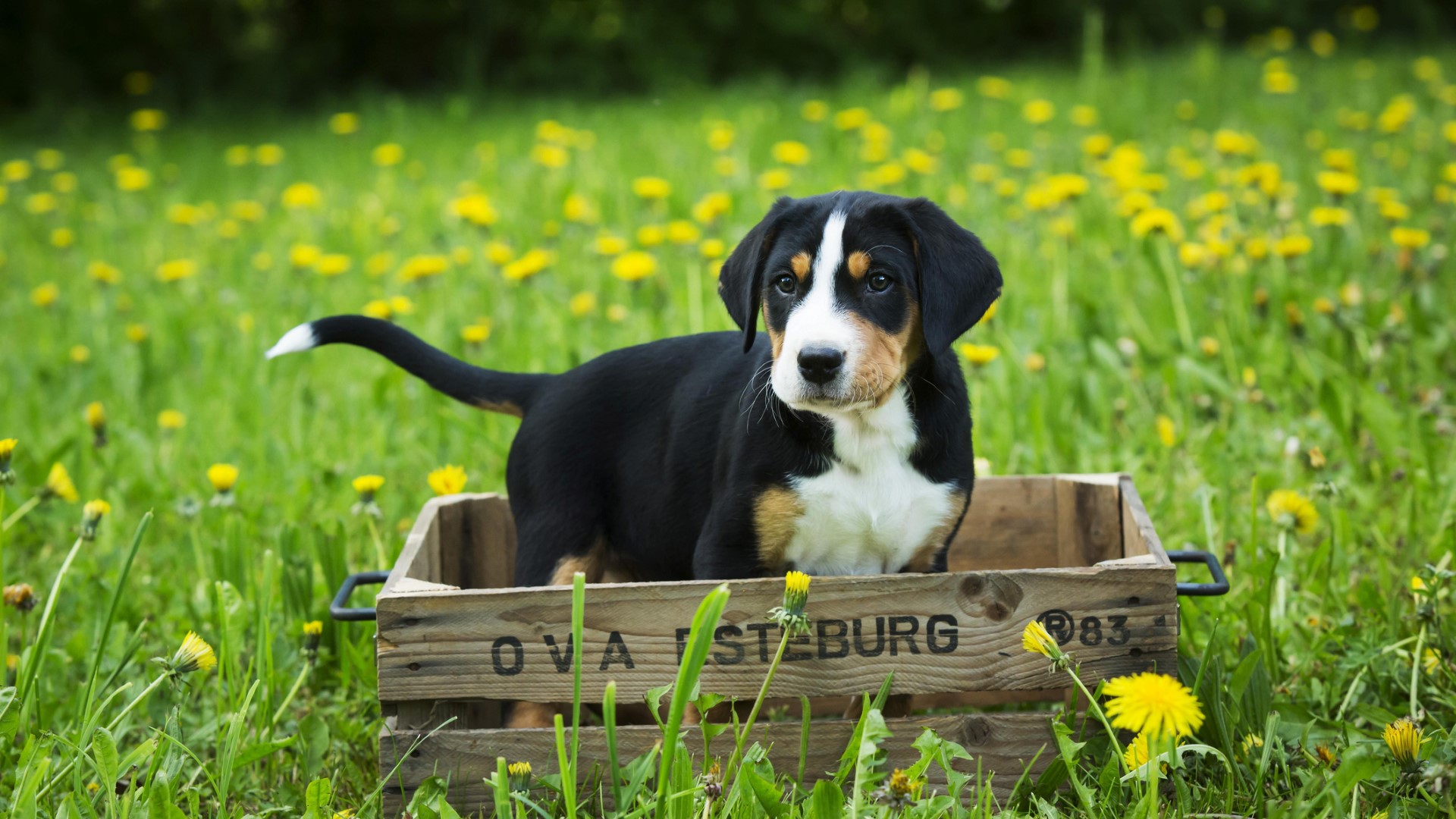
Swissies were bred as versatile working dogs, and as such, they have an adaptable nature. With proper socialization and consistent enrichment, exercise, and rest they tend to thrive in a range of social settings and environments. They can often thrive in rural, suburban, and urban settings with the right support and care. Just make sure if you live in the suburbs or city to frequently access green spaces such as parks and walking trails and read up on tips to help keep dog walks fun to keep this nature-loving breed happy.
23. They can be quite sociable with other dogs
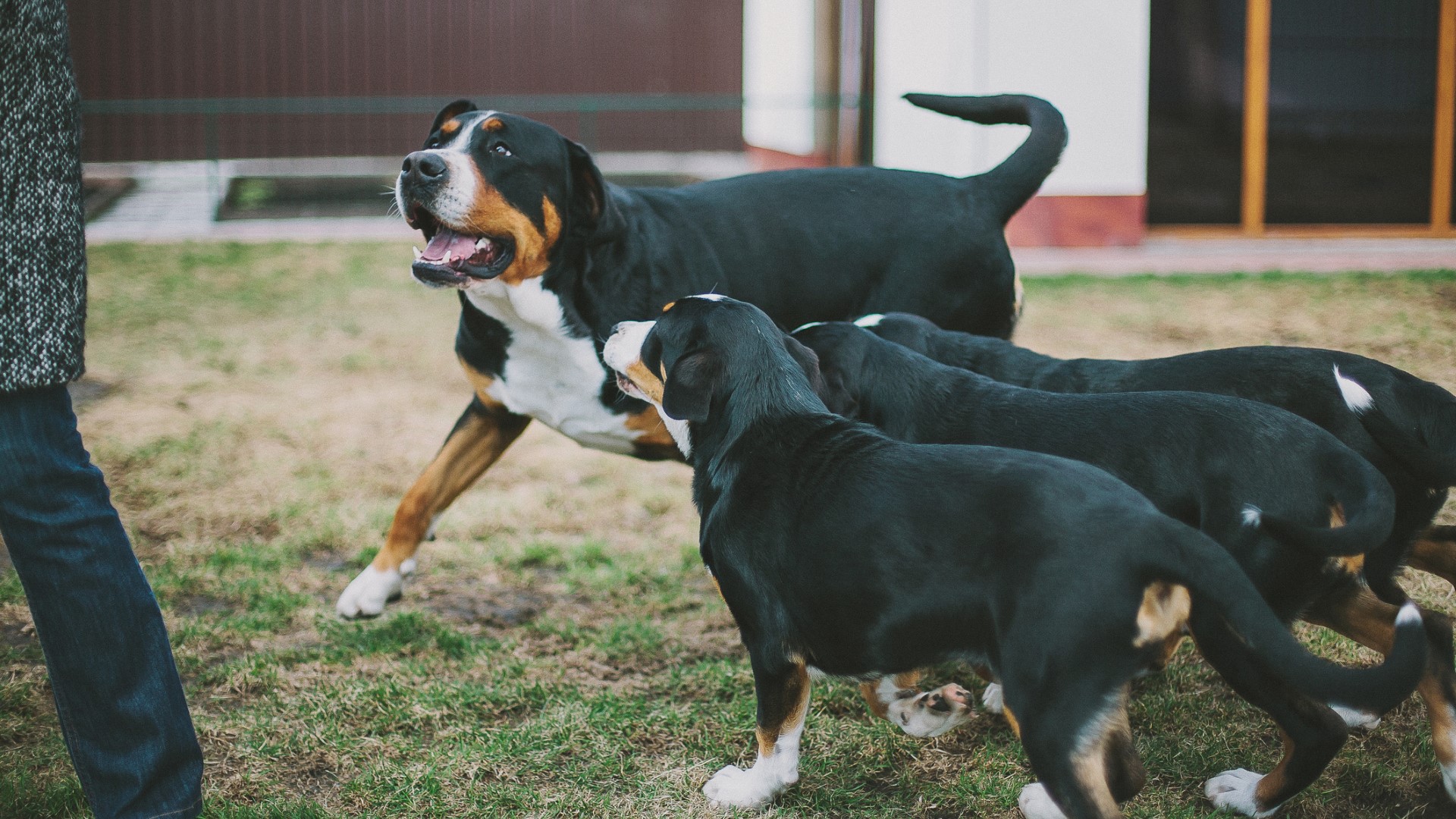
Greater Swiss Mountain dogs are typically sociable and friendly with other dogs provided they are well-socialized and feel comfortable. Some do incorporate herding behaviors into their play with other pups, so it’s important to teach them to back off and try a different play style if the other dog isn’t having fun. You can achieve this by teaching and heavily rewarding good recall from a young age and by facilitating lots of breaks during play time to prevent a herding fixation.
24. Some GSMDs are prone to separation anxiety
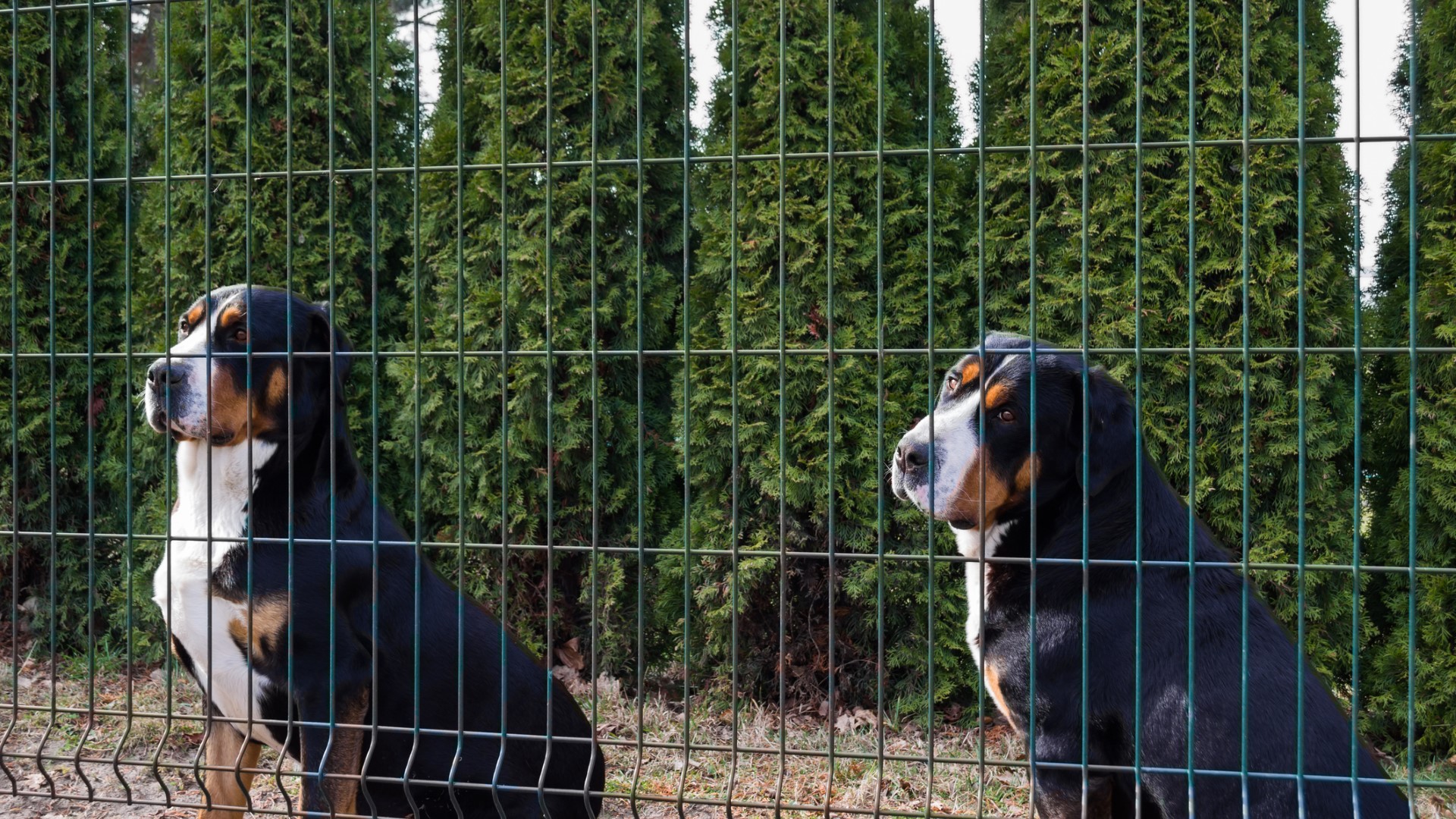
Swissies are often characterized as velcro dogs because of the strong bonds and attachments they form with their people. Building strong bonds with your pup doesn’t increase the risk of separation anxiety developing, but a dog who follows you around like a shadow and doesn’t have a lot of confidence is more at risk. Swissies are one of the dog breeds most likely to have separation anxiety, so to help prevent this, make sure to incorporate brief absences into their daily life from puppyhood. Additionally, focus on raising a confident dog who is securely, but not anxiously, attached to you.
25. They can become destructive when bored
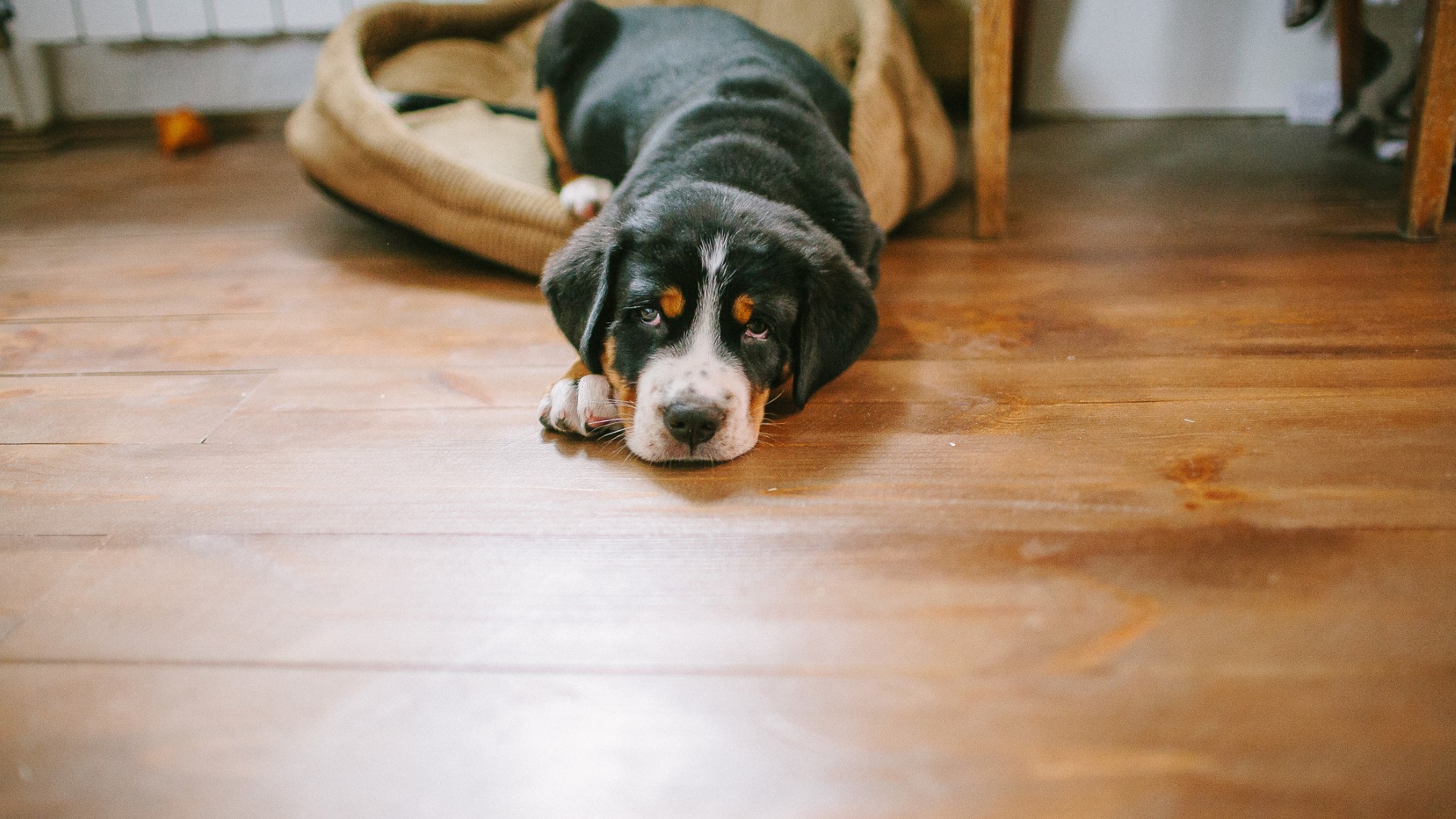
Bred as active working dogs among other animals and people, Swissies can become destructive without consistent and varied enrichment, exercise, and social engagement. If you plan on adopting a Greater Swiss Mountain dog, make sure you can provide lots of opportunities to play games and engage in activities such as tug of war, fetch, herding games, carting, hiking with packs, long decompression walks, and agility. Investing in interactive toys and some of the best dog puzzles can also help keep your GSMD content.
26. They love to snuggle
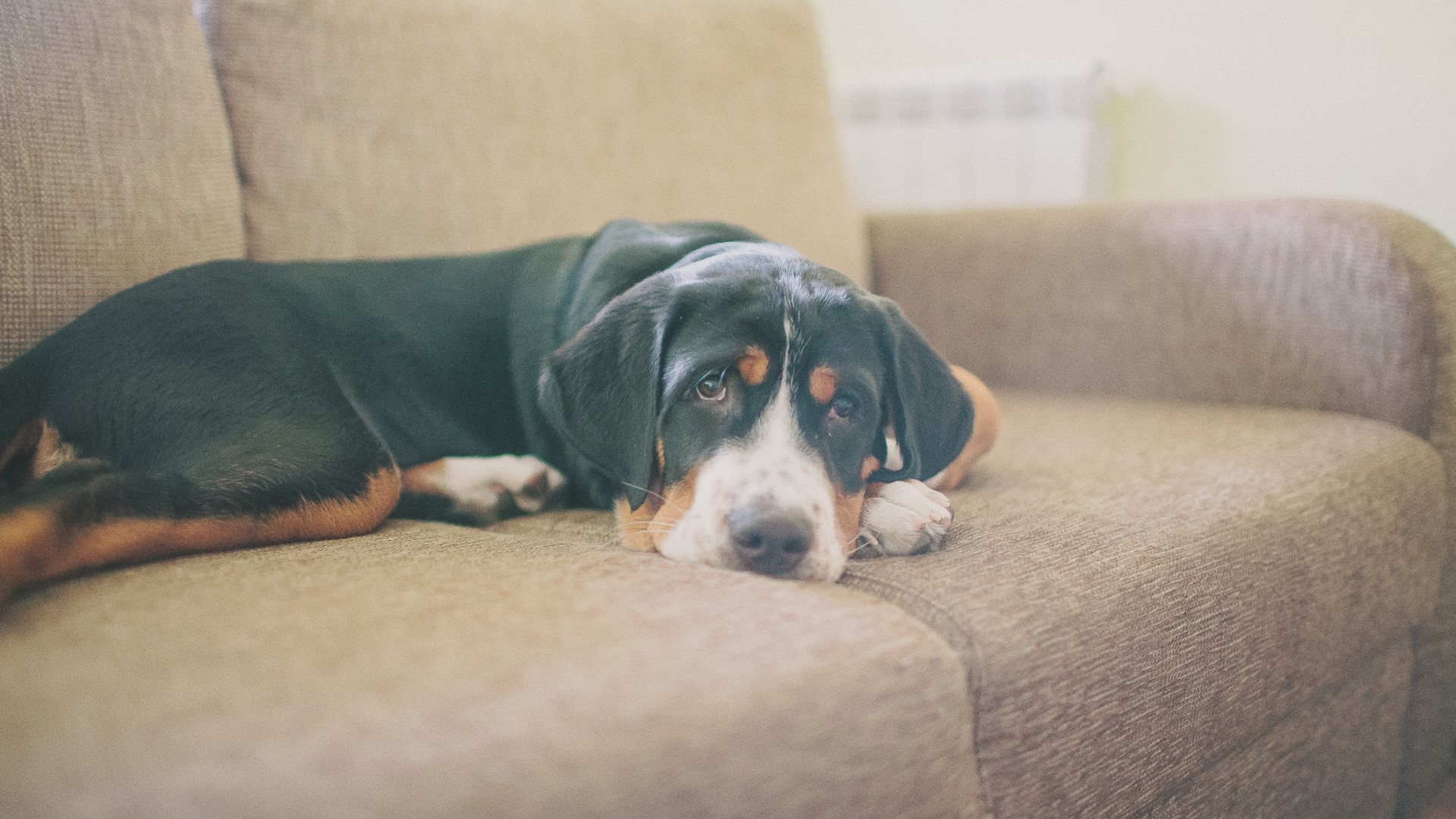
While of course every dog is an individual with their own personality and preferences, Swissies are known for being particularly cuddly pups. The AKC rates this breed as a five out of five for their characteristically snuggly and affectionate behaviors. They tend to be specifically snuggly with their family members and people they know well as the breed can be a bit wary and more reserved around strangers.
27. They have moderate grooming requirements
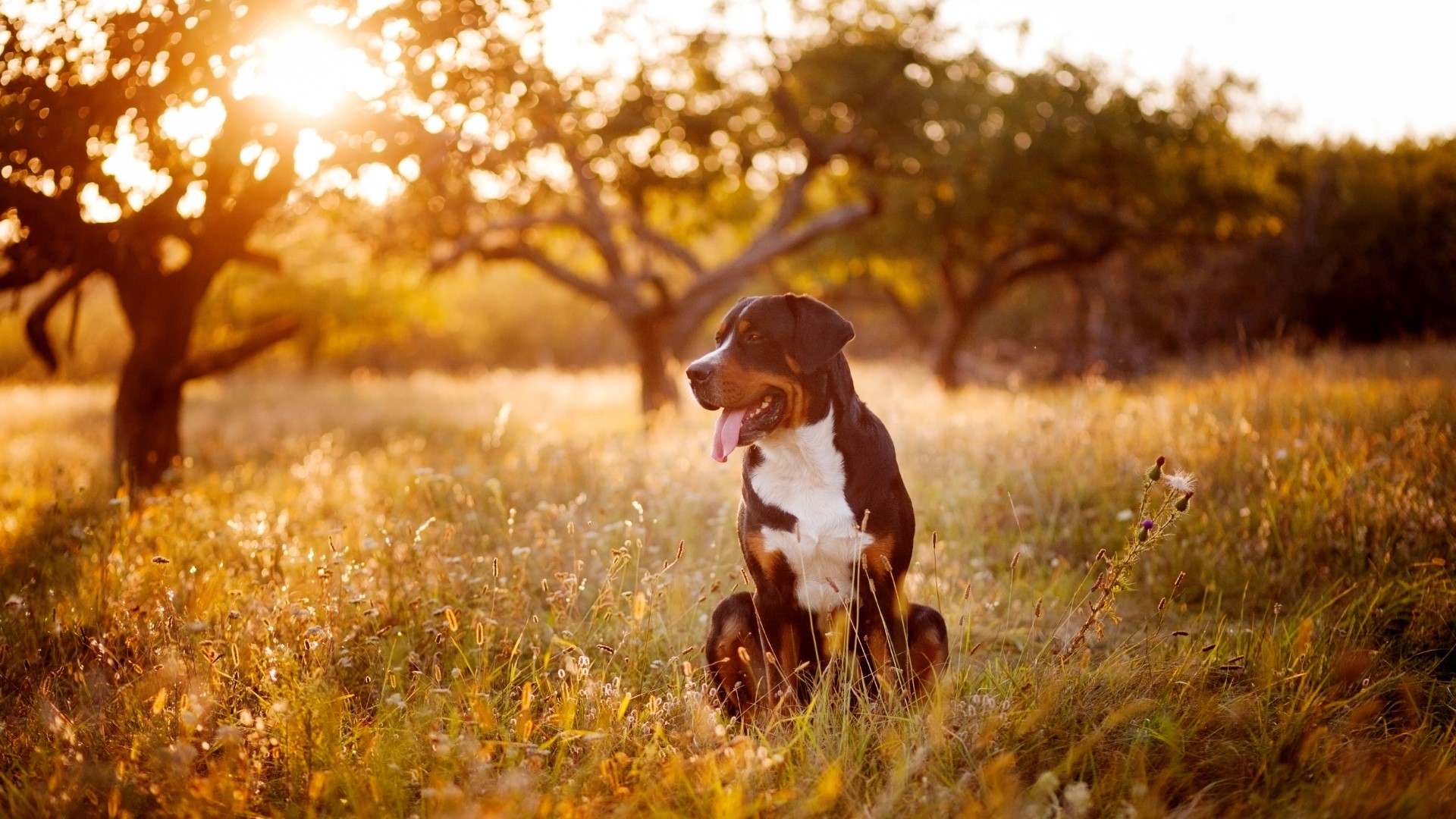
While they don’t feature a long coat, Greater Swiss Mountain dogs do regularly shed and have moderate grooming requirements. During periods of heavy shedding, brushing two to three times per week can help manage loose hairs around the home. Brushing also keeps their coat healthy and shiny.
Shaving this breed is not recommended as their double coat helps with temperature regulation throughout both warm and cold seasons. They only need baths with a mild dog shampoo when they are particularly dirty as frequent baths can strip their coat of its natural oils. These pups will also need regular nail trimming, ear cleaning, and preventative dental care.
28. The breed nearly went extinct
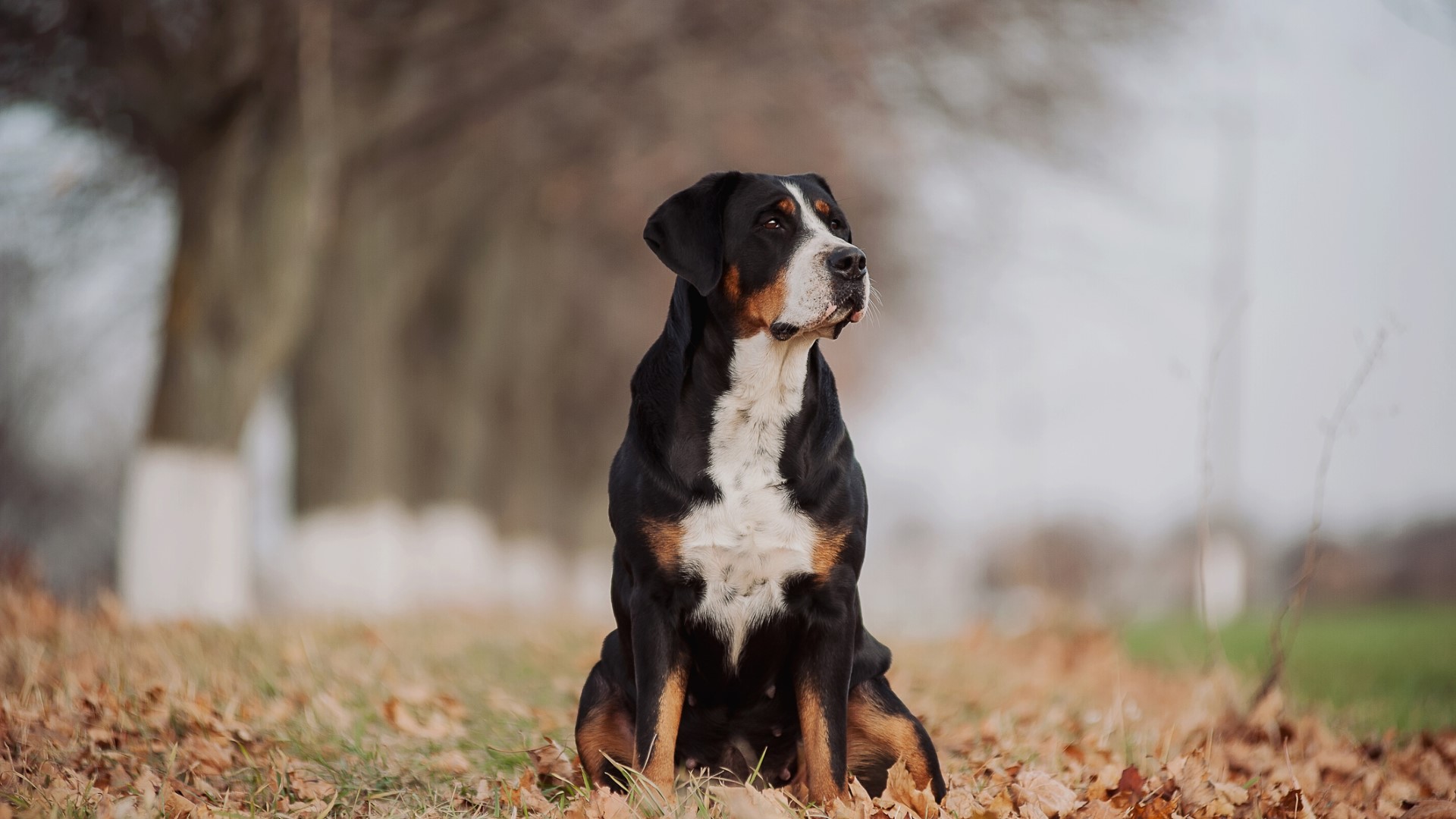
By the late 19th century, Greater Swiss Mountain dogs nearly went extinct due to a few impactful reasons. The rise of industrialization reduced the need for these working dogs to pull carts and herd cattle. As with several European breeds, the First and Second World Wars also reduced the population and the ability for breeding programs to operate.
A decline in rural living also led to a decline in the popularity of this farm breed. Swissies very well may have gone extinct but for the dedication of Dr. Albert Heim who helped reestablish a robust breeding program and educational campaign about the fantastic qualities of GSMDs.
29. They sometimes have blue eyes

While most Swissies have brown eyes, blue-eyed dogs are sometimes born due to a genetic variation occasionally found within the breed. This feature does disqualify them from confirmation shows, but having blue eyes does not present any health risks or vision complications for the breed. Commonly with GSMDs affected by this genetic variation, only one eye is blue while the other remains the usual brown color.
30. They're sturdy yet agile
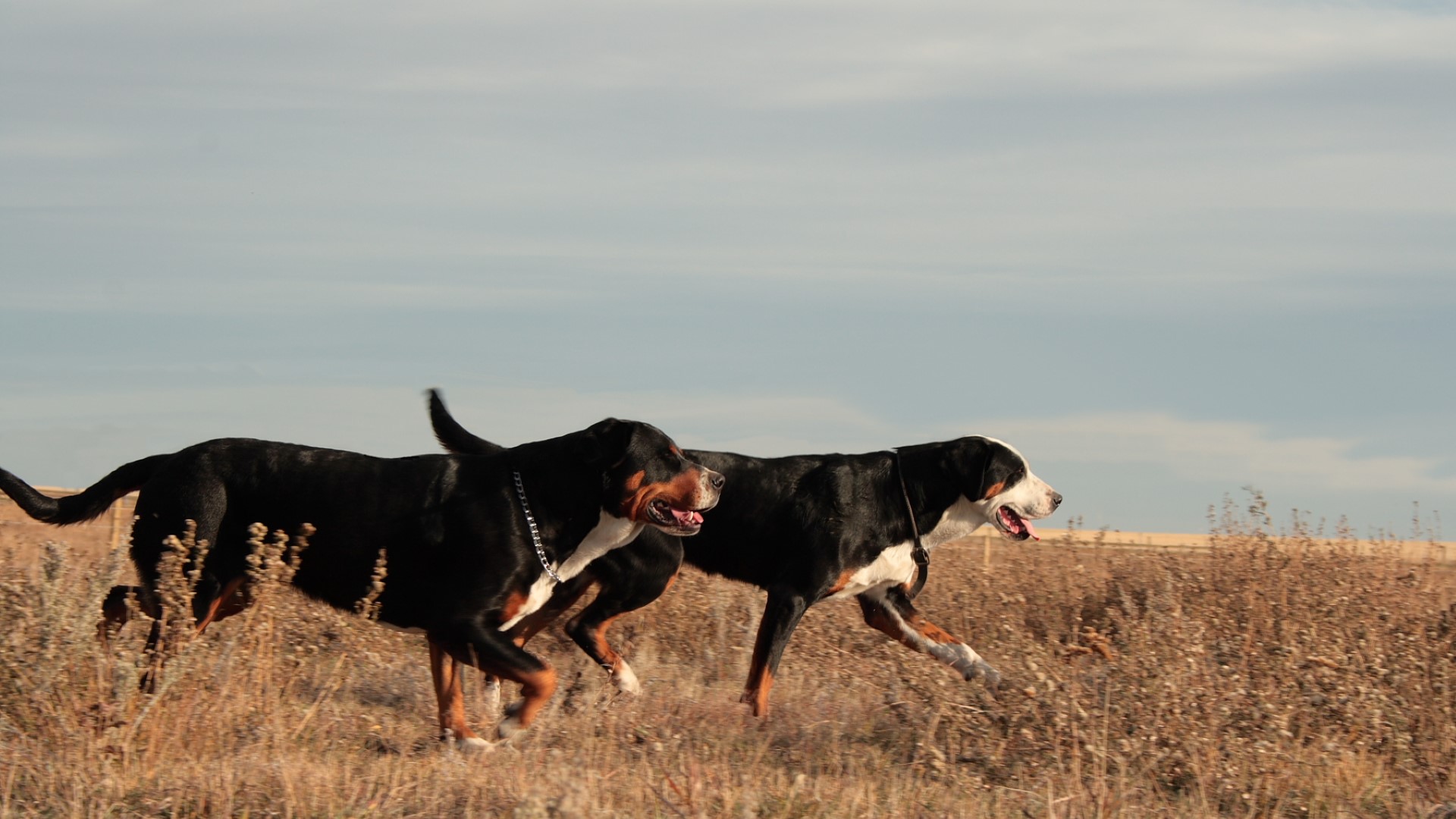
Despite their large size, Greater Swiss Mountain dogs are quite agile. Being agile and quick on their feet was a necessary trait for herding cattle. Not only did they need to herd cattle, but they had to move them across mountainous terrain. As such, the breed has been selectively bred for generations to have a sturdy and solid build but graceful and athletic ability. Today, some Swissies excel in agility courses.
31. Swissies have moderate energy requirements
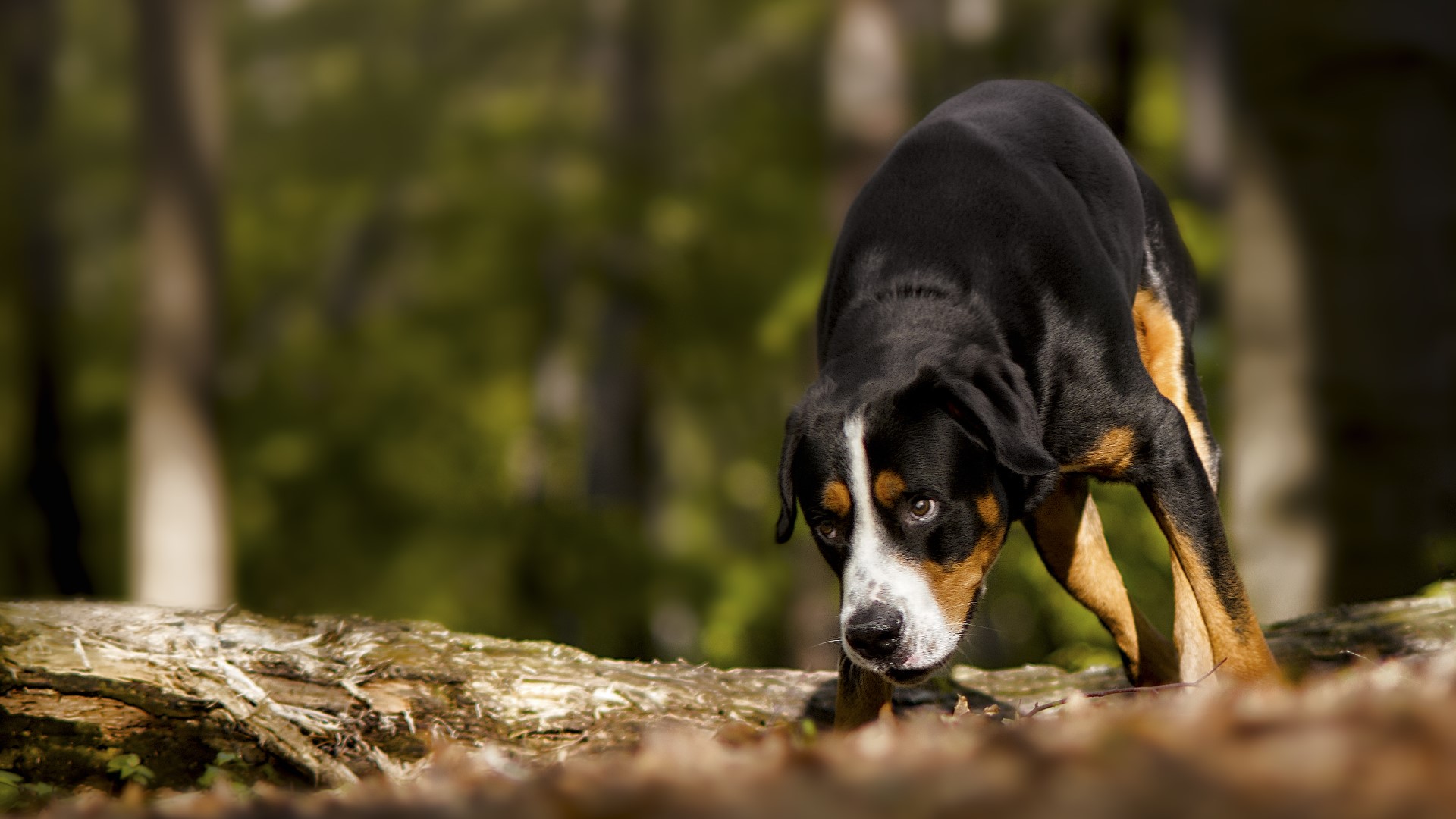
If you plan on adopting a greater Swiss mountain dog, you’ll need to be prepared to meet their moderate energy needs. This breed doesn’t require daily runs and will happily snooze for hours each day, but they do still need daily enrichment and exercise. Daily walks, especially in natural settings, plus play time, are usually enough to satisfy the physical requirements for this moderately active breed.
32. They were know as "the poor man's horse"
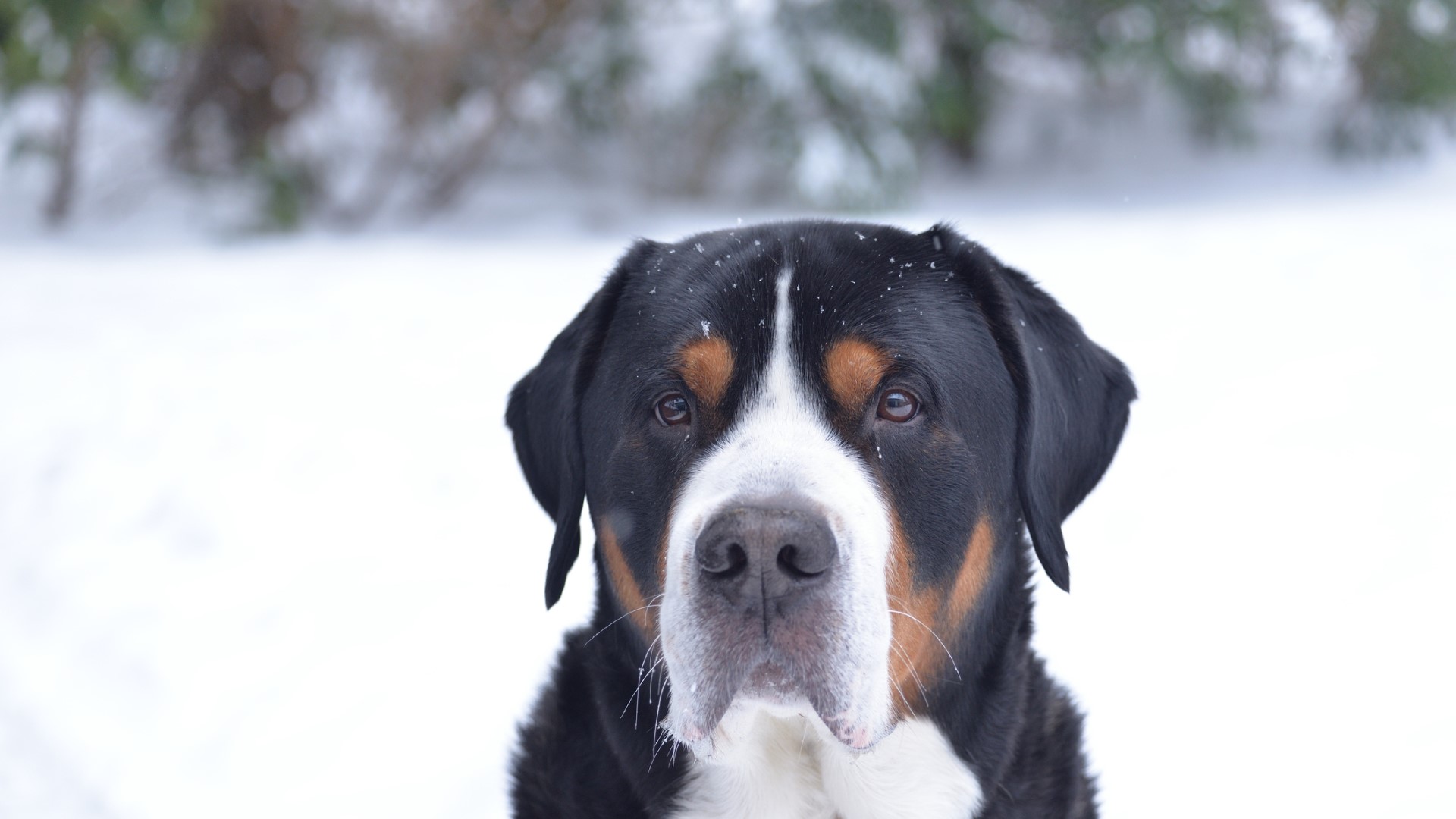
For centuries in the Swiss Alps, GSMDs worked as a draft breed, hauling carts filled with goods over the alpine terrain. They were sometimes called "the poor man's horse" and carried products for trade and sustenance goods like produce, bread, eggs, and meat. These dogs were an invaluable part of the lives of working, rural Swiss families. Today, some Swissies participate in cart-pulling trials along with other similar breeds such as Bernese mountain dogs, St. Bernards, and Newfoundlands.







